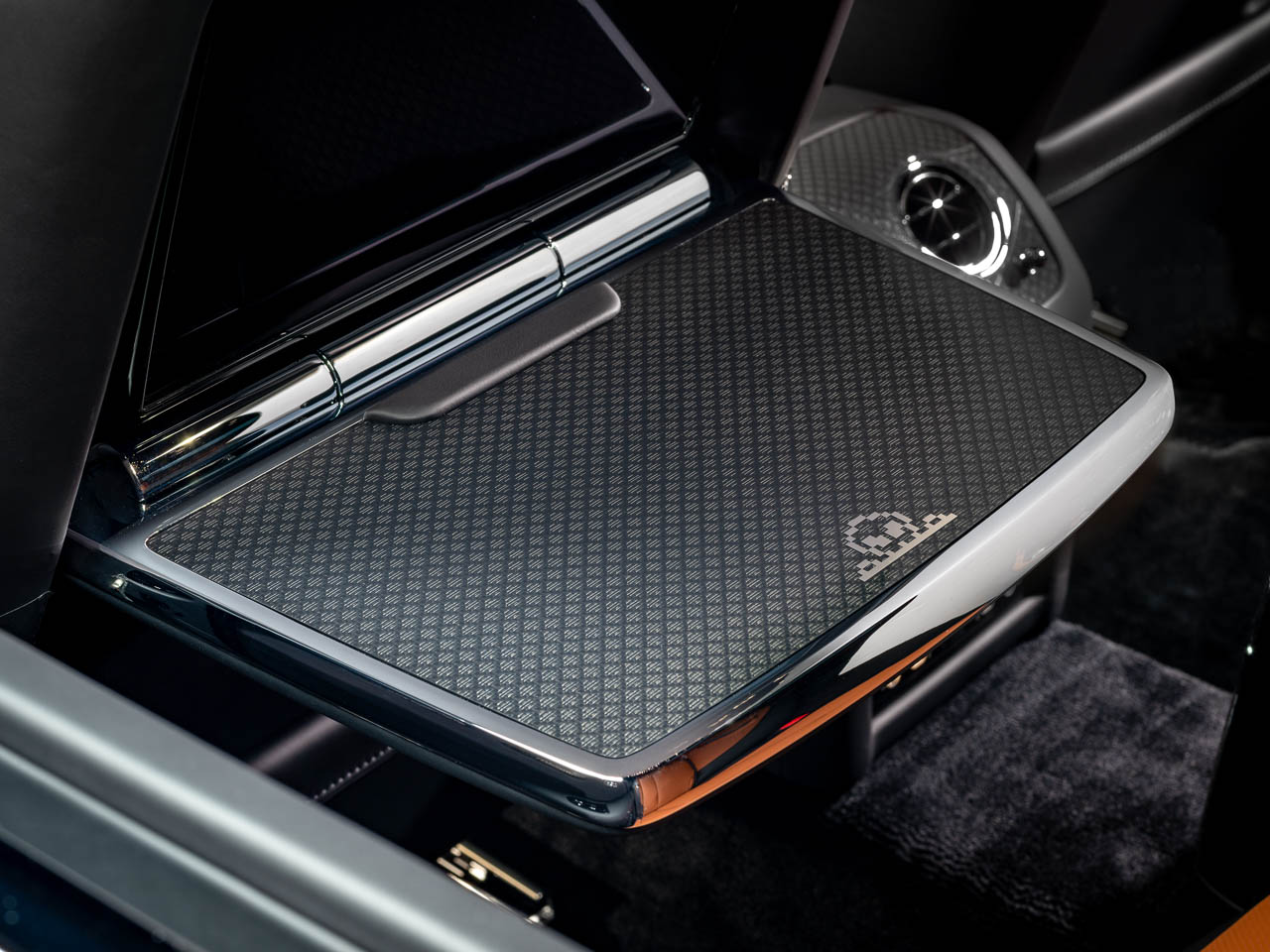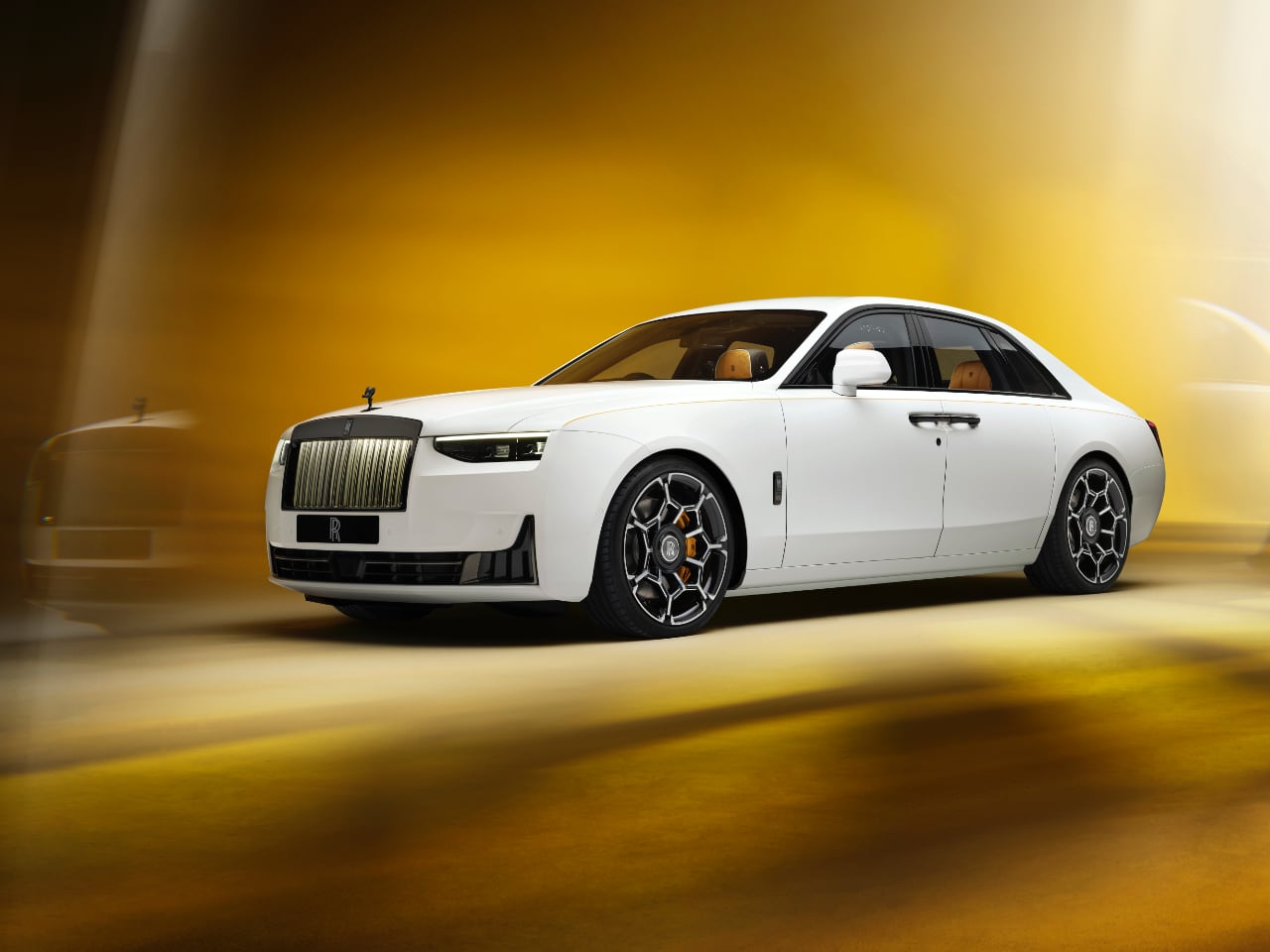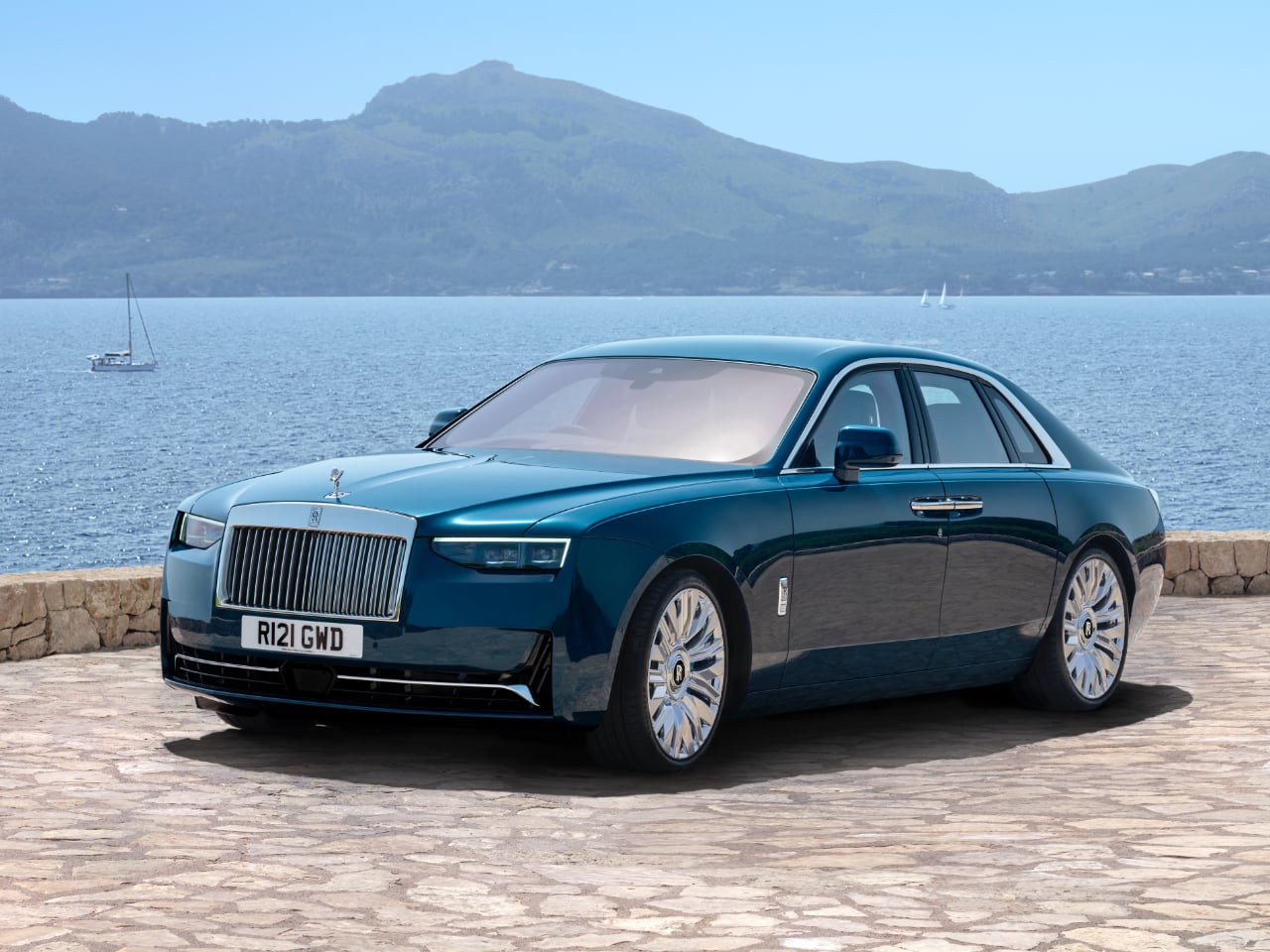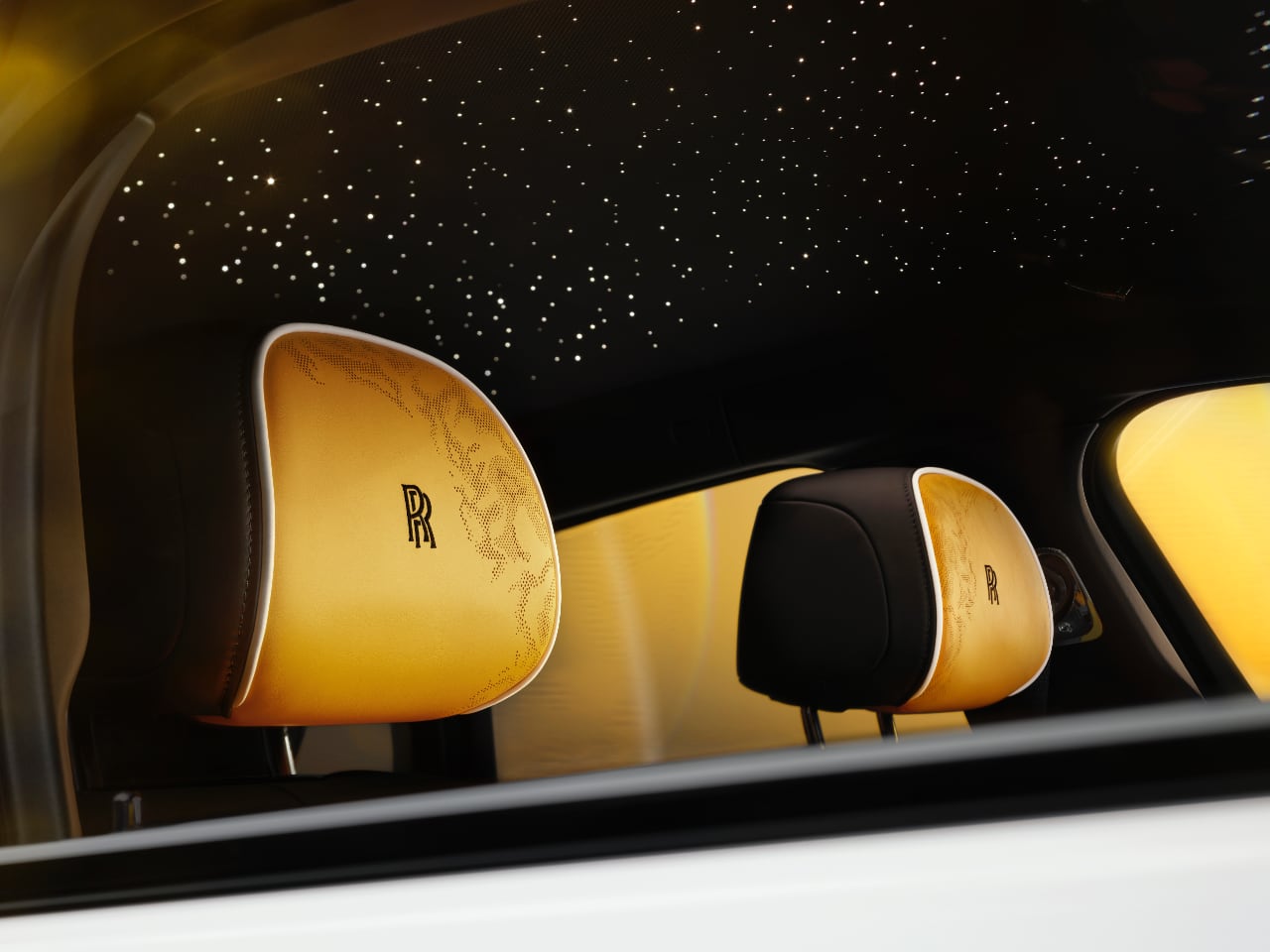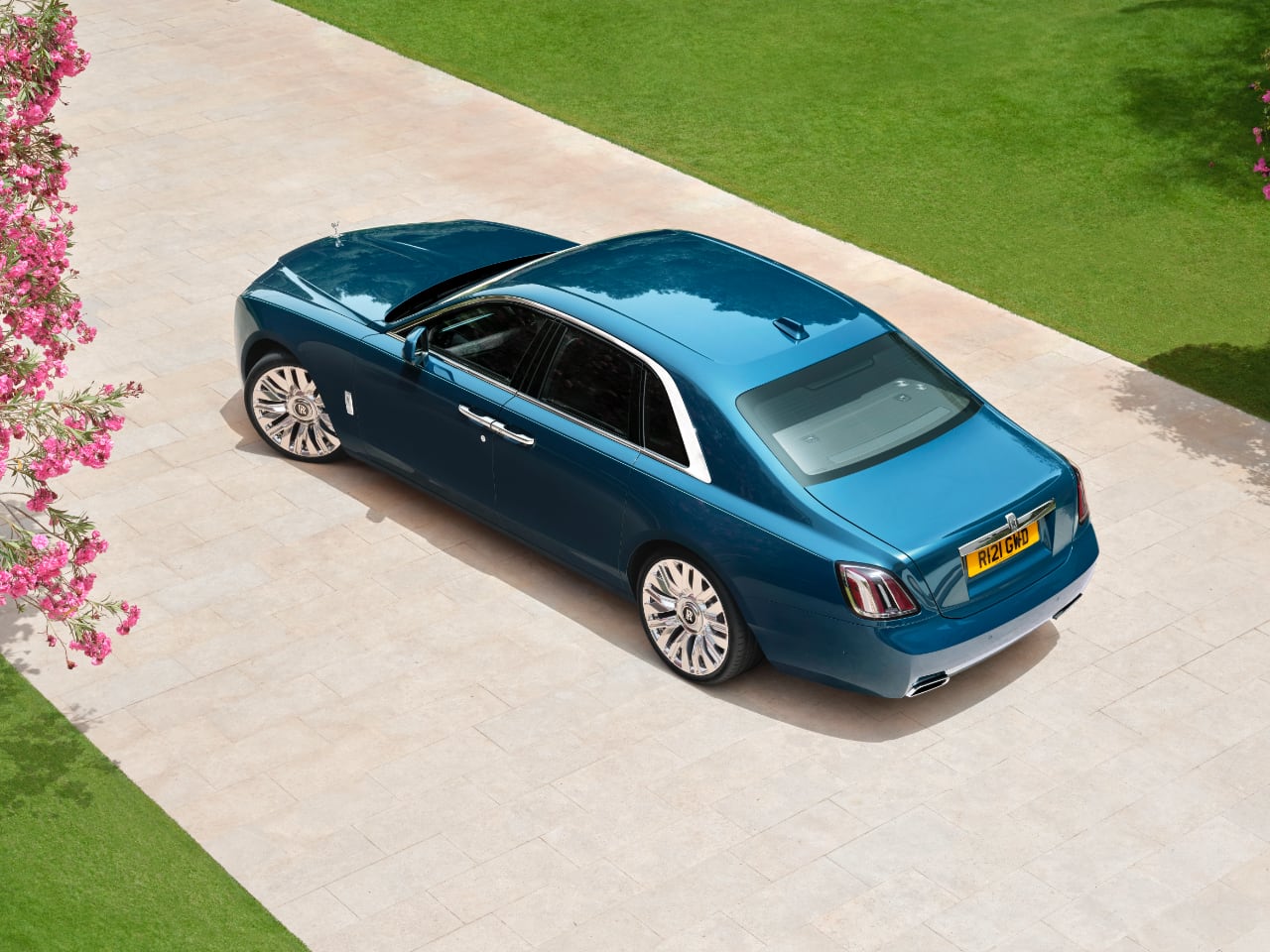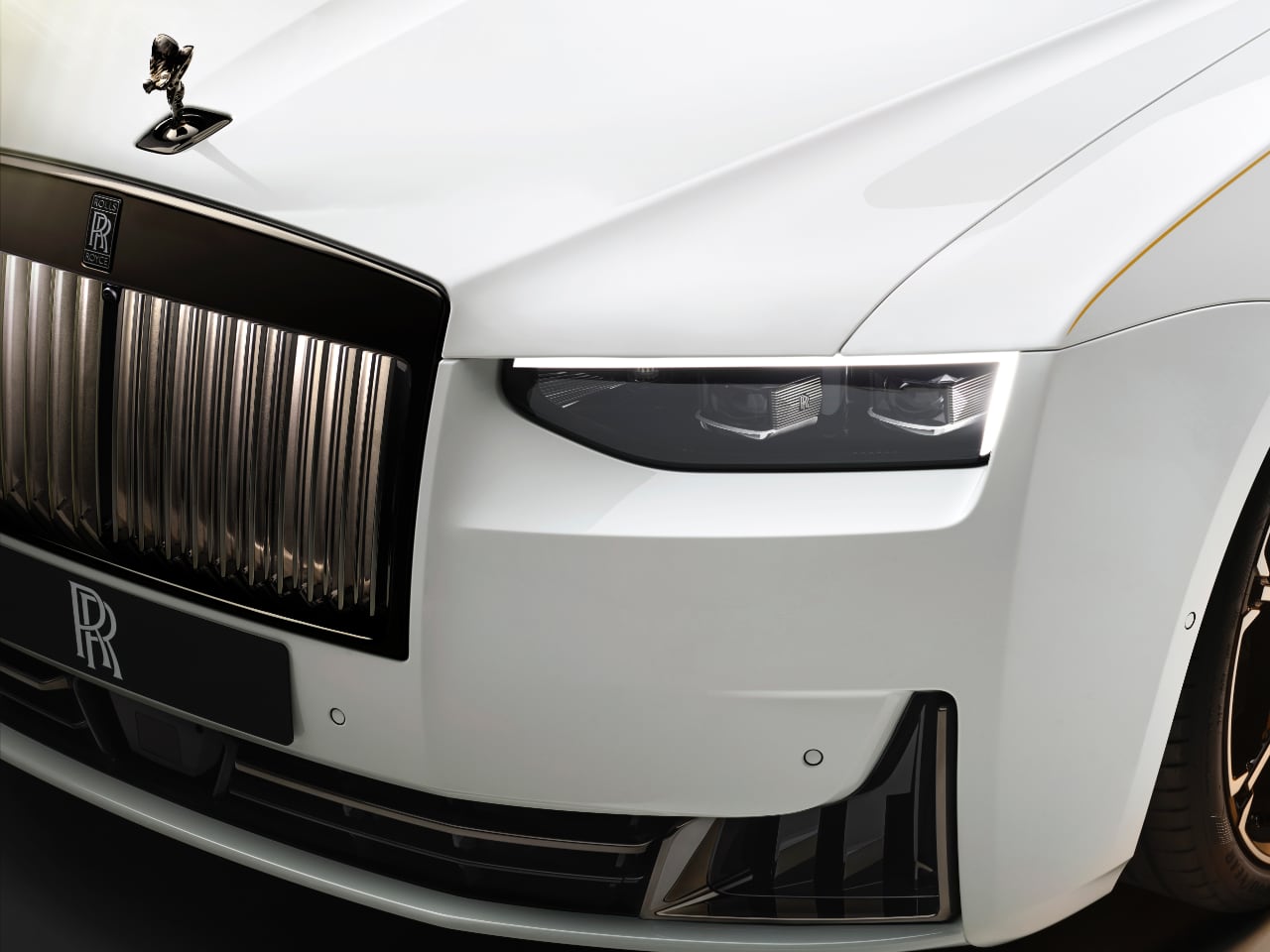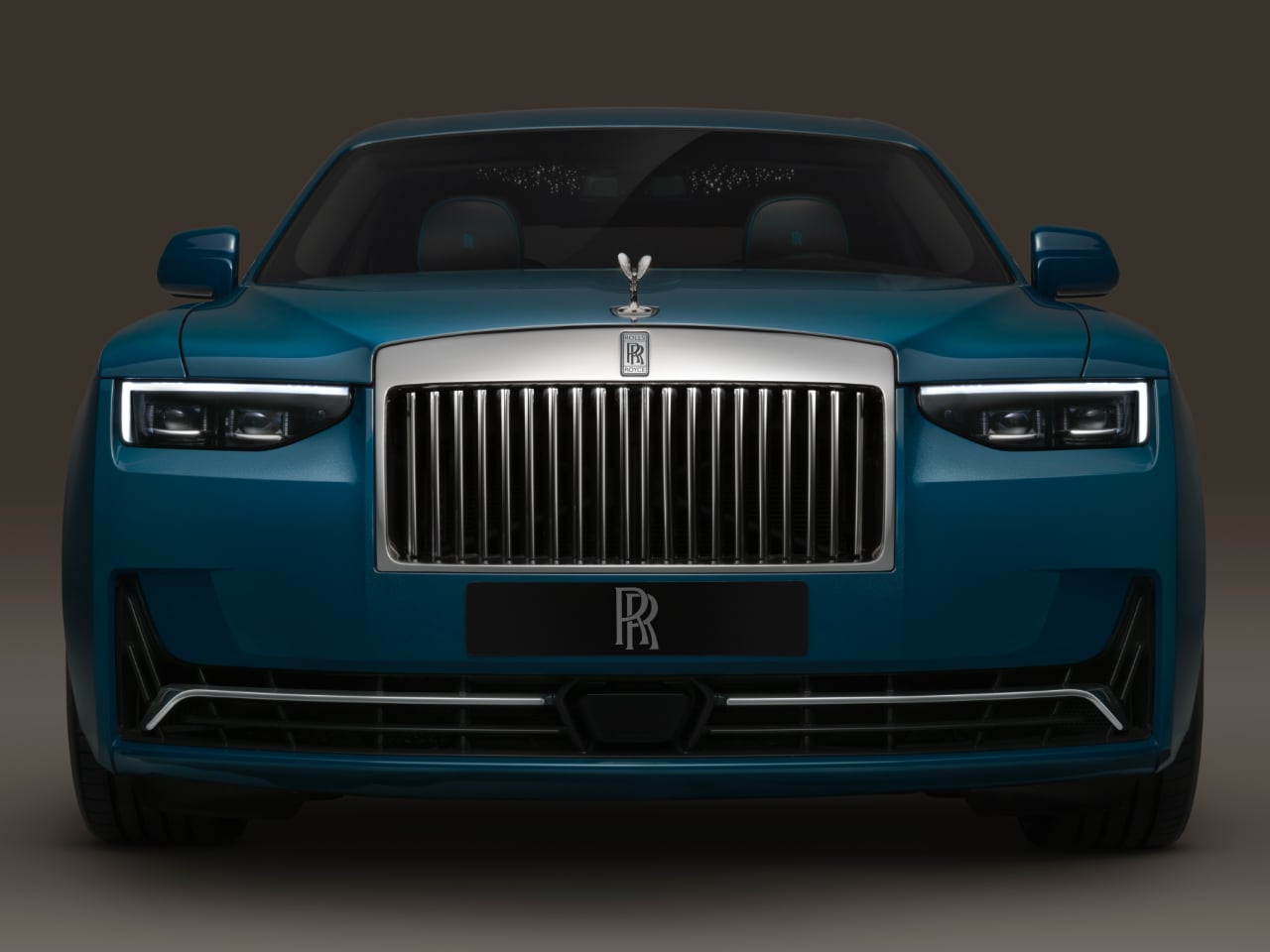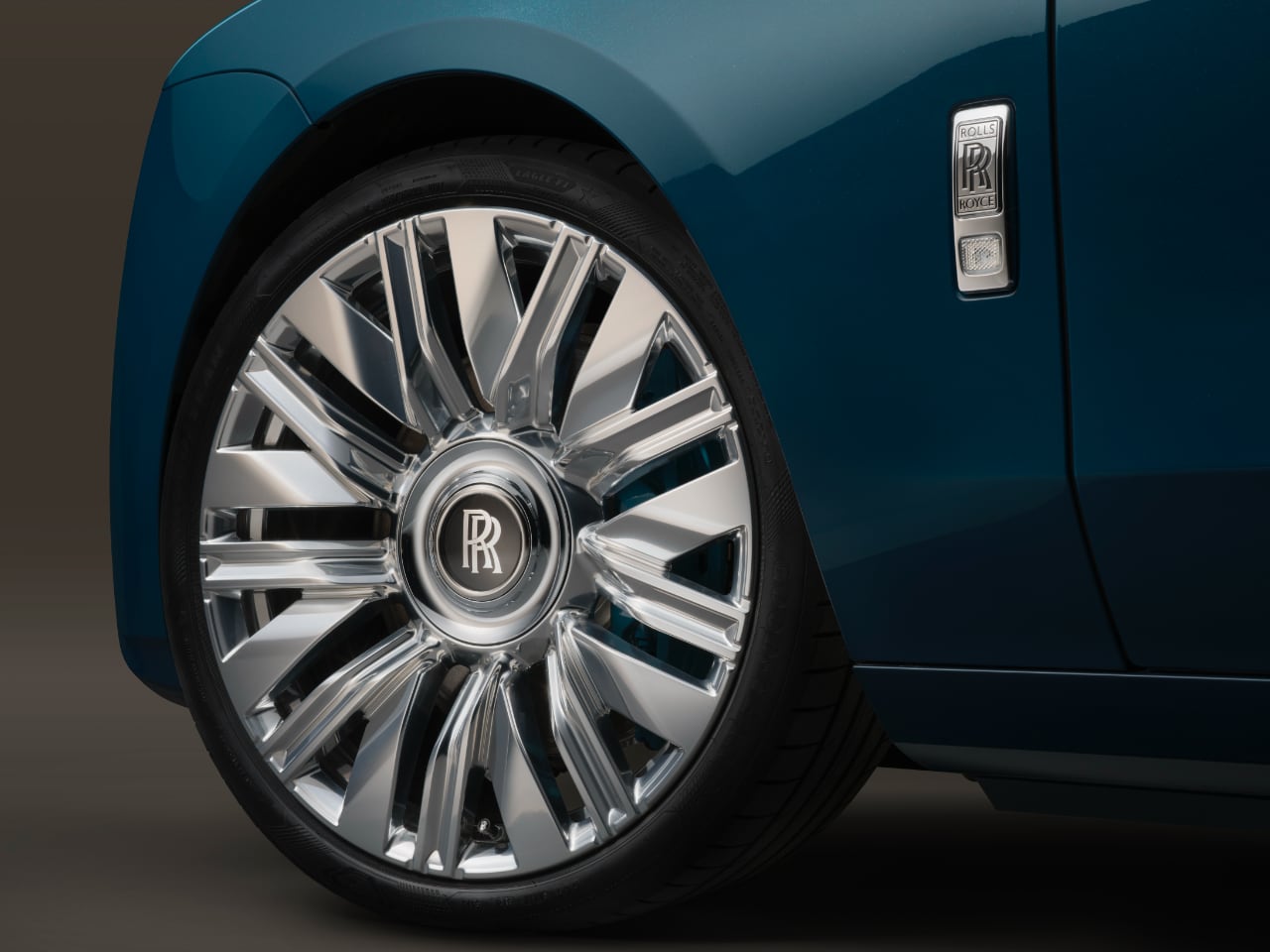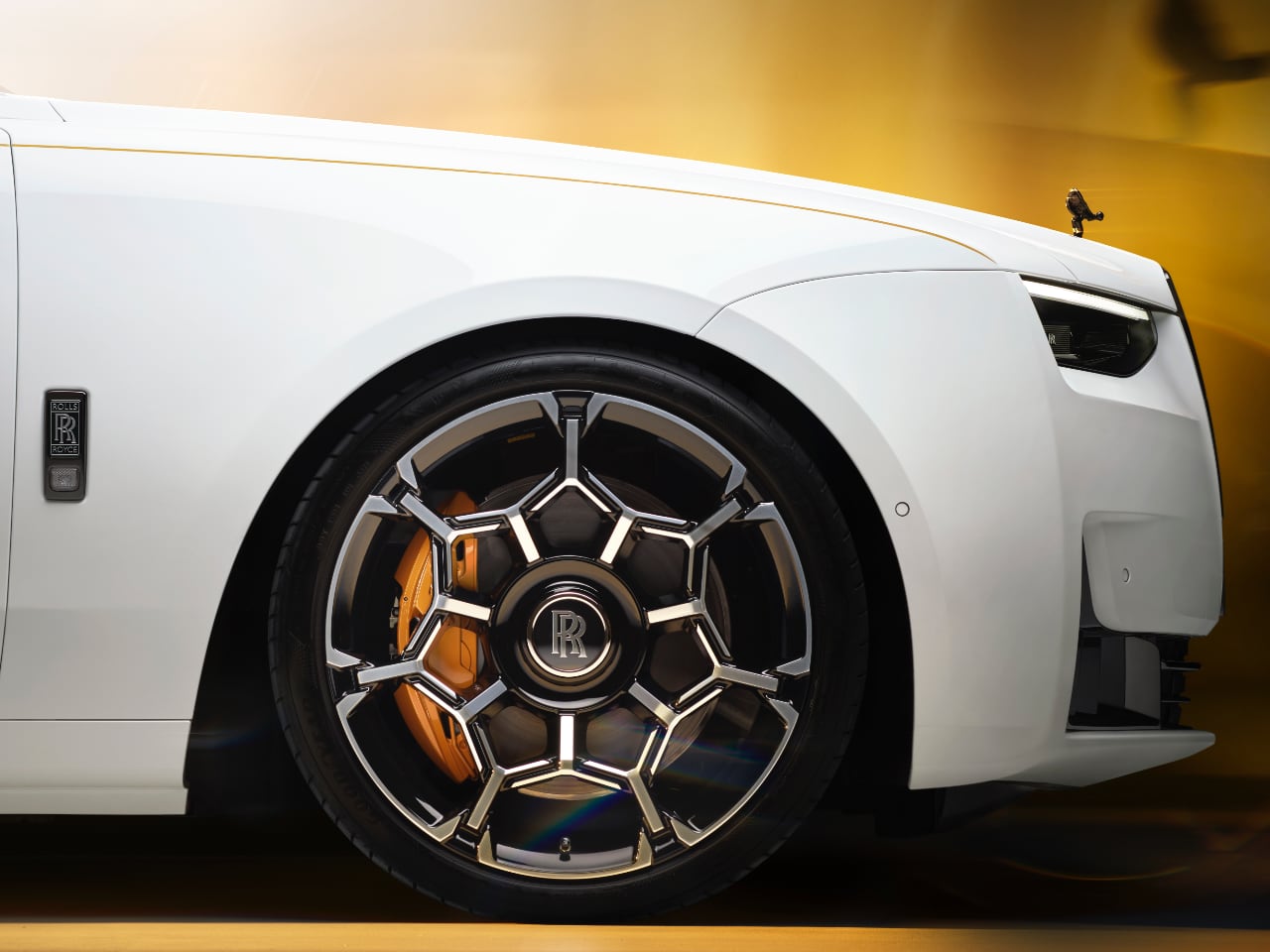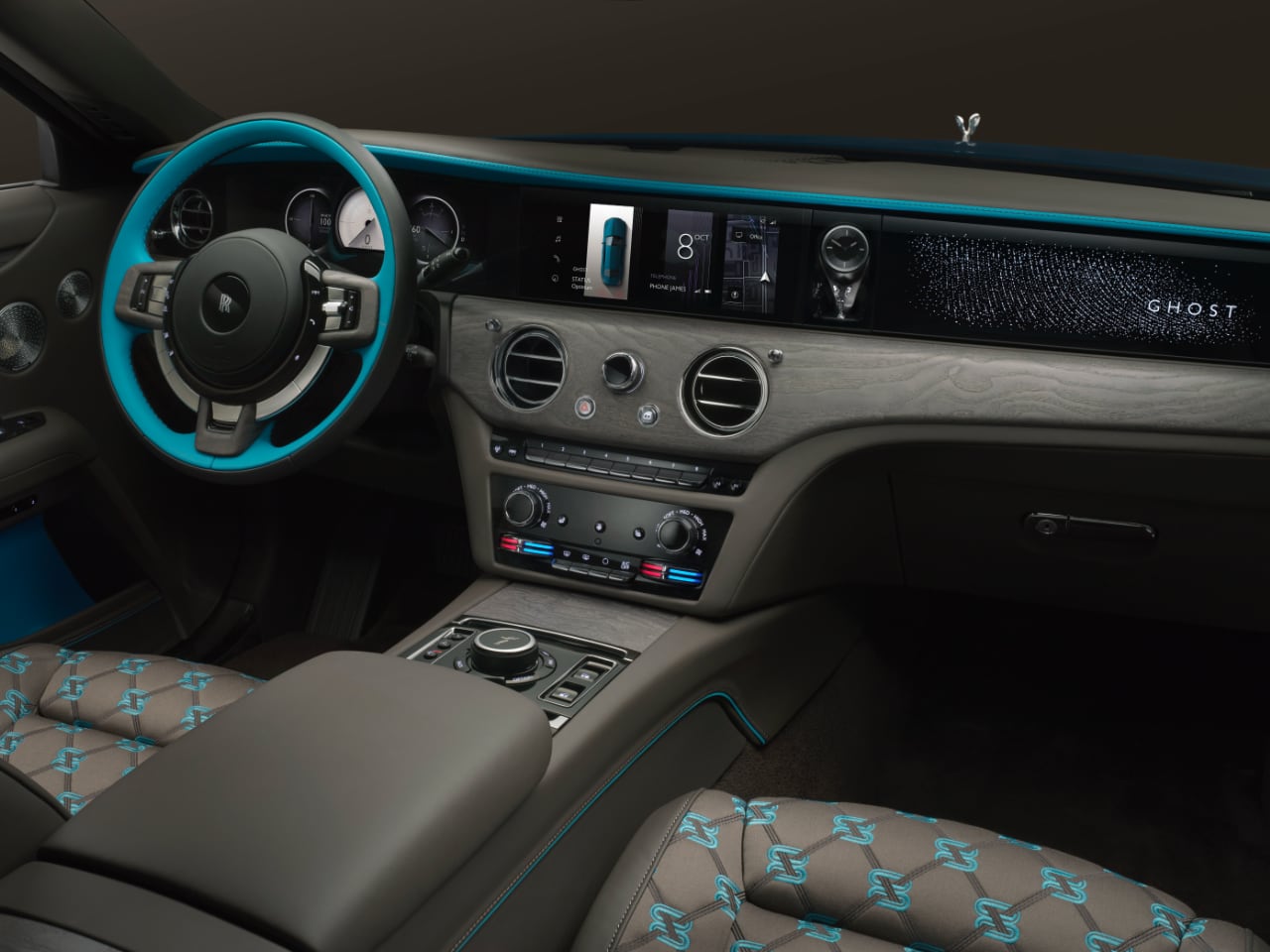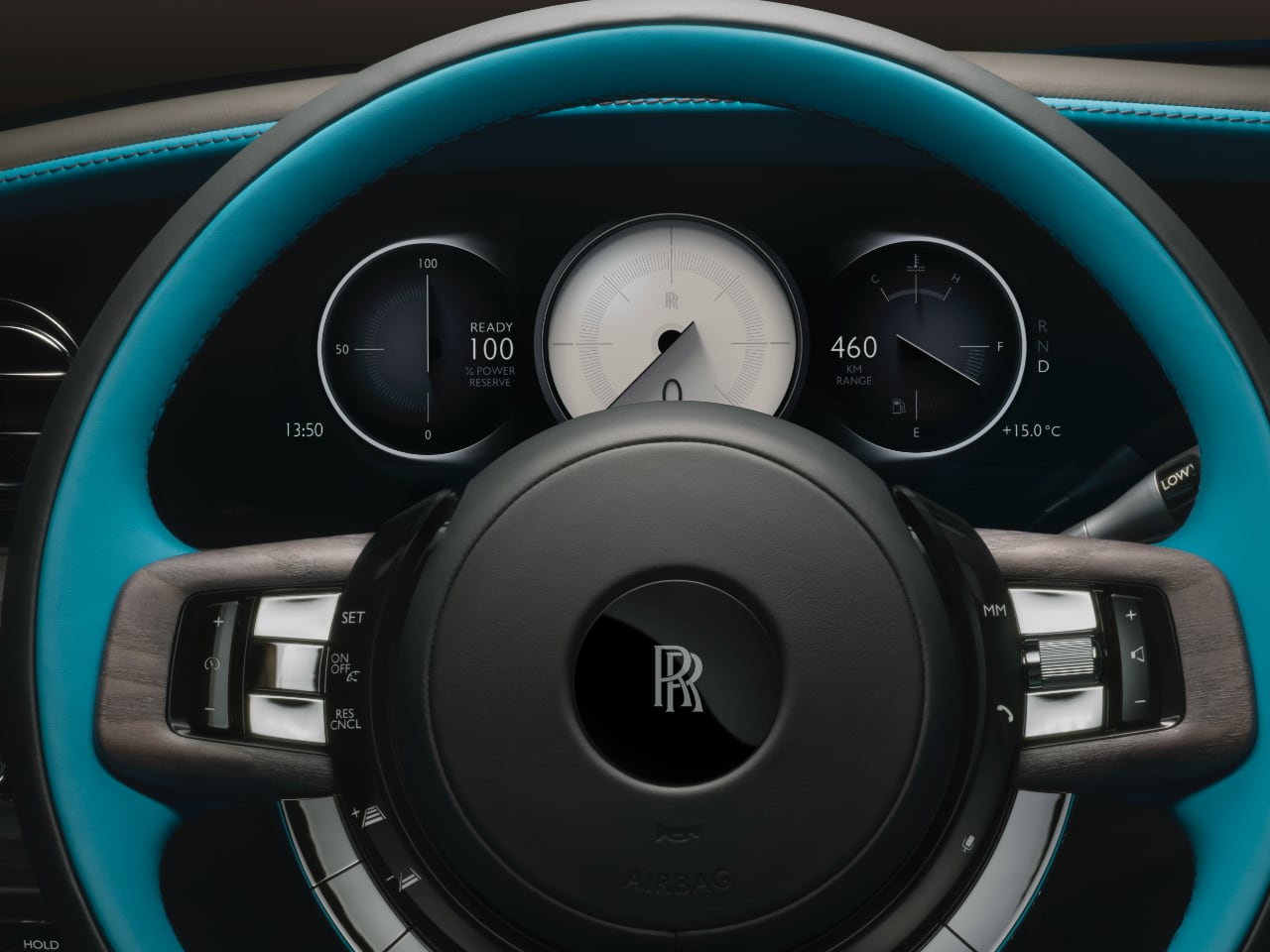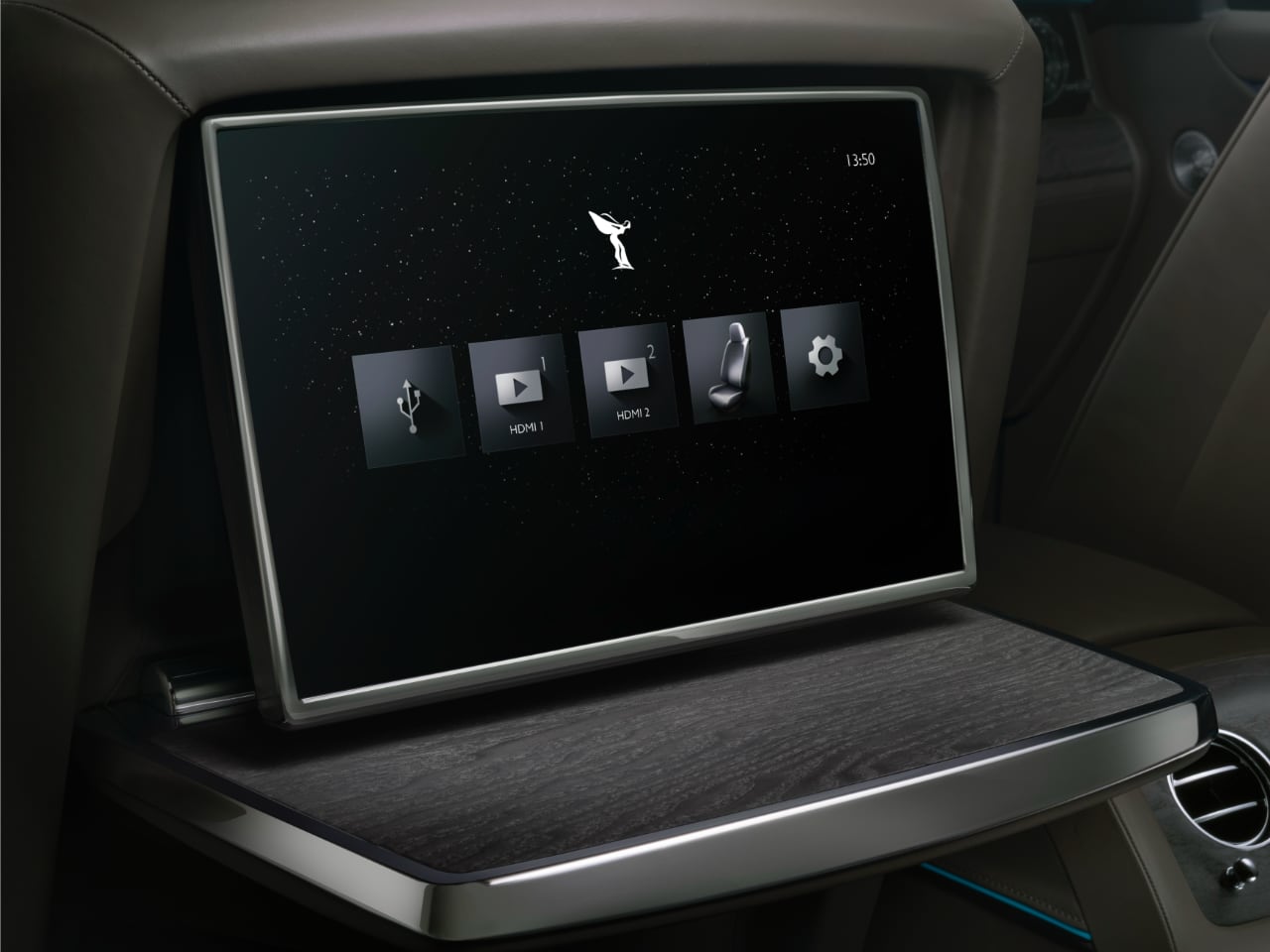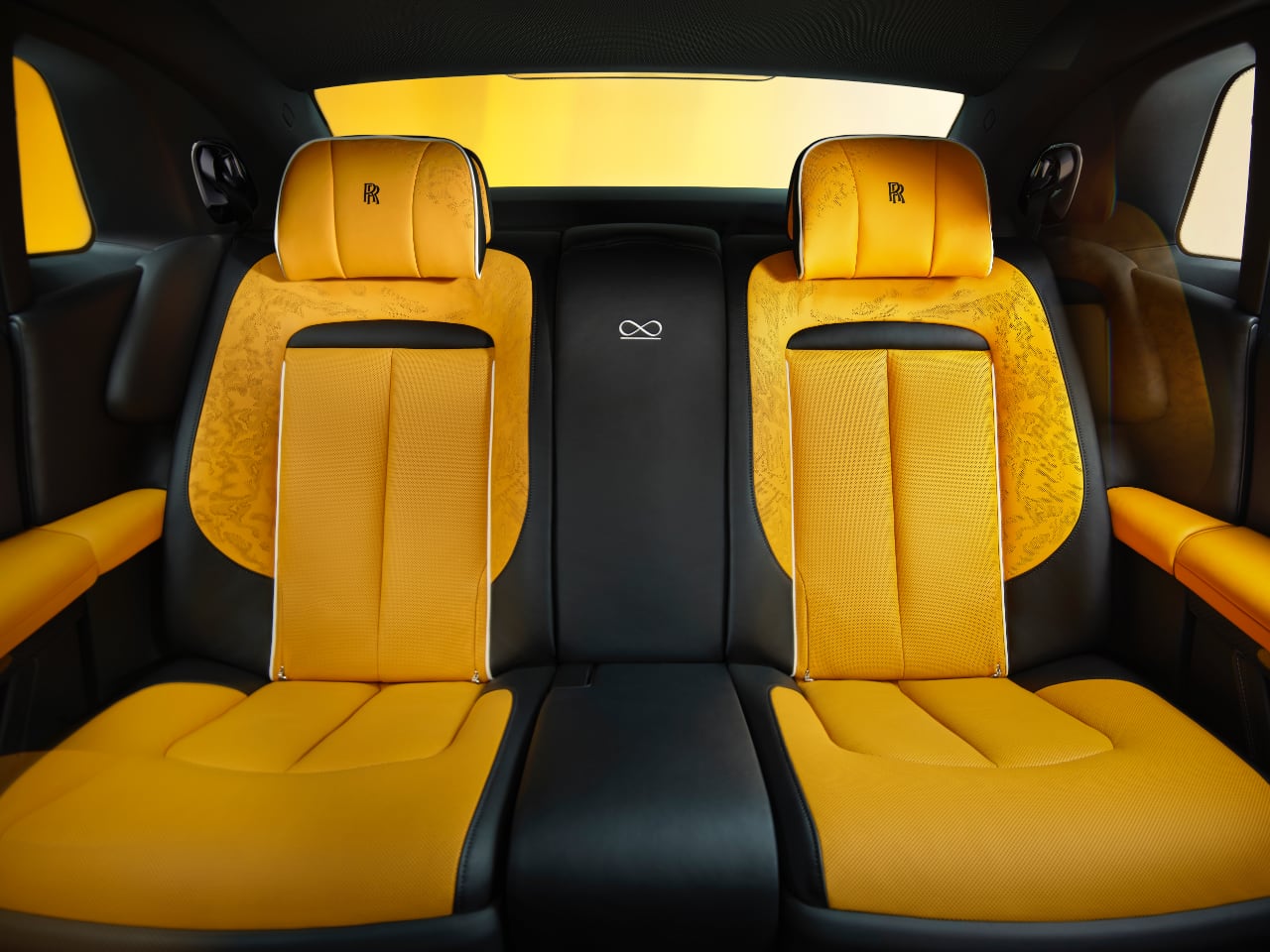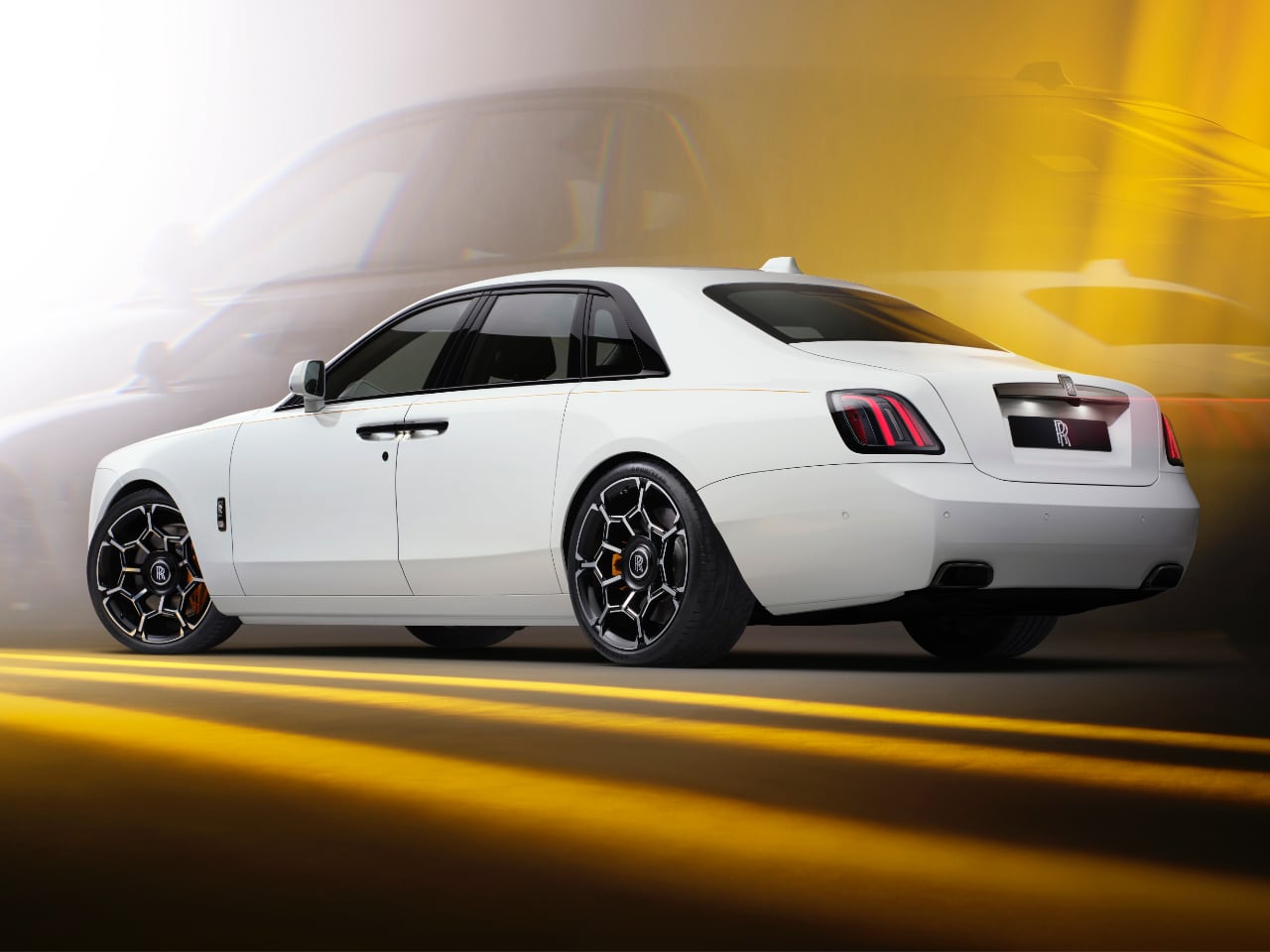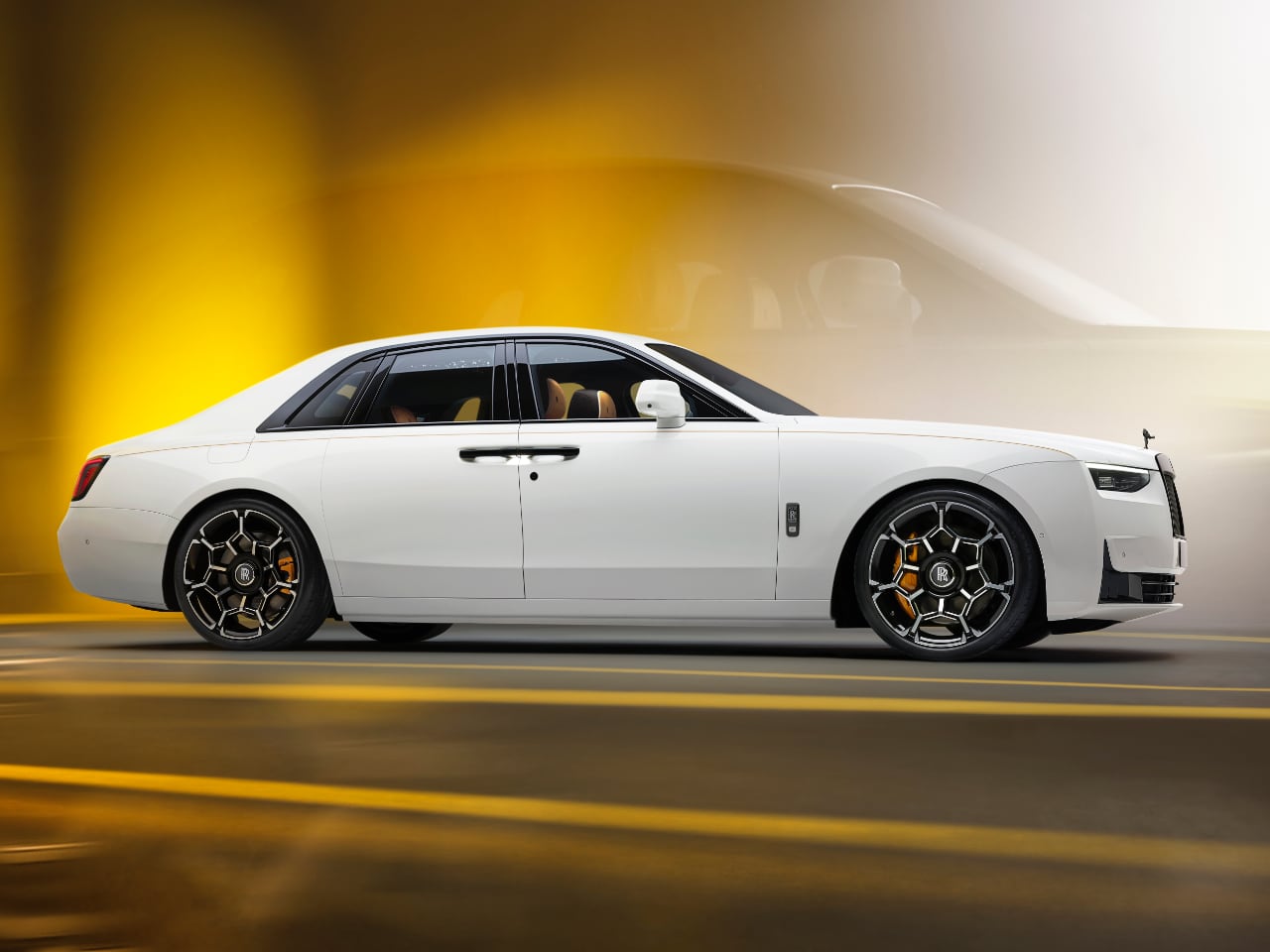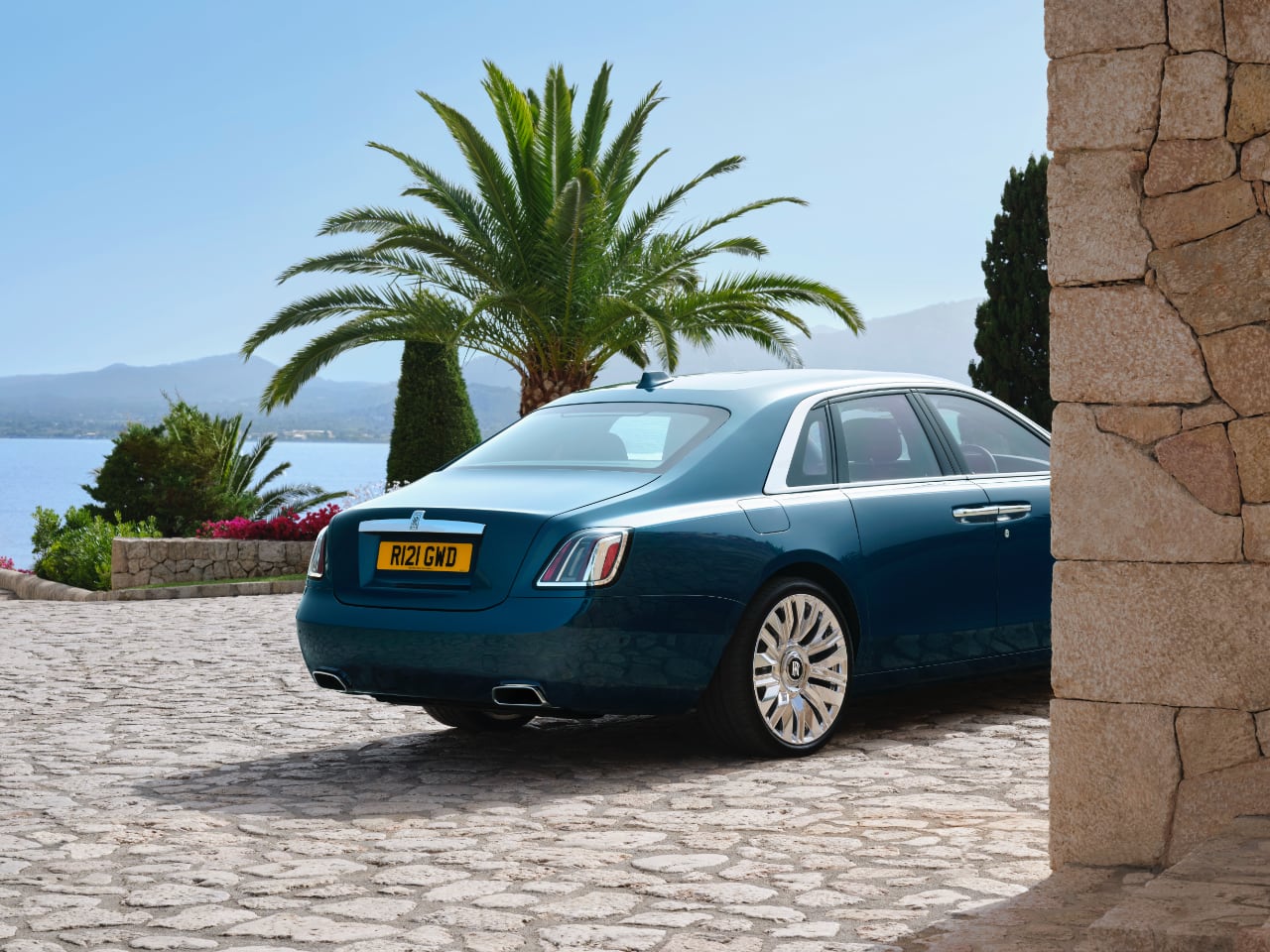Anders Warming, the Director of Design at Rolls-Royce, presented the Spectre EV’s design philosophy at Amelia Island Concours d’Elegance a couple of years back, providing a comprehensive look into its design philosophy and highlighting the specific elements that make the Rolls-Royce Spectre unique. During his in-depth presentation, Warming strongly emphasized the integral role of storytelling in the design process at Rolls-Royce. He explained that each design element tells a story that reflects a deep and enduring connection to the brand’s rich heritage. However, this commitment to tradition doesn’t hinder innovation. On the contrary, it acts as a potent platform for challenging design limits, enabling the integration of creative elements that improve the overall vehicle’s experience, providing a glimpse into the delicate equilibrium of tradition and advancement that characterizes Rolls-Royce.
Designer: Anders Warming for Rolls-Royce
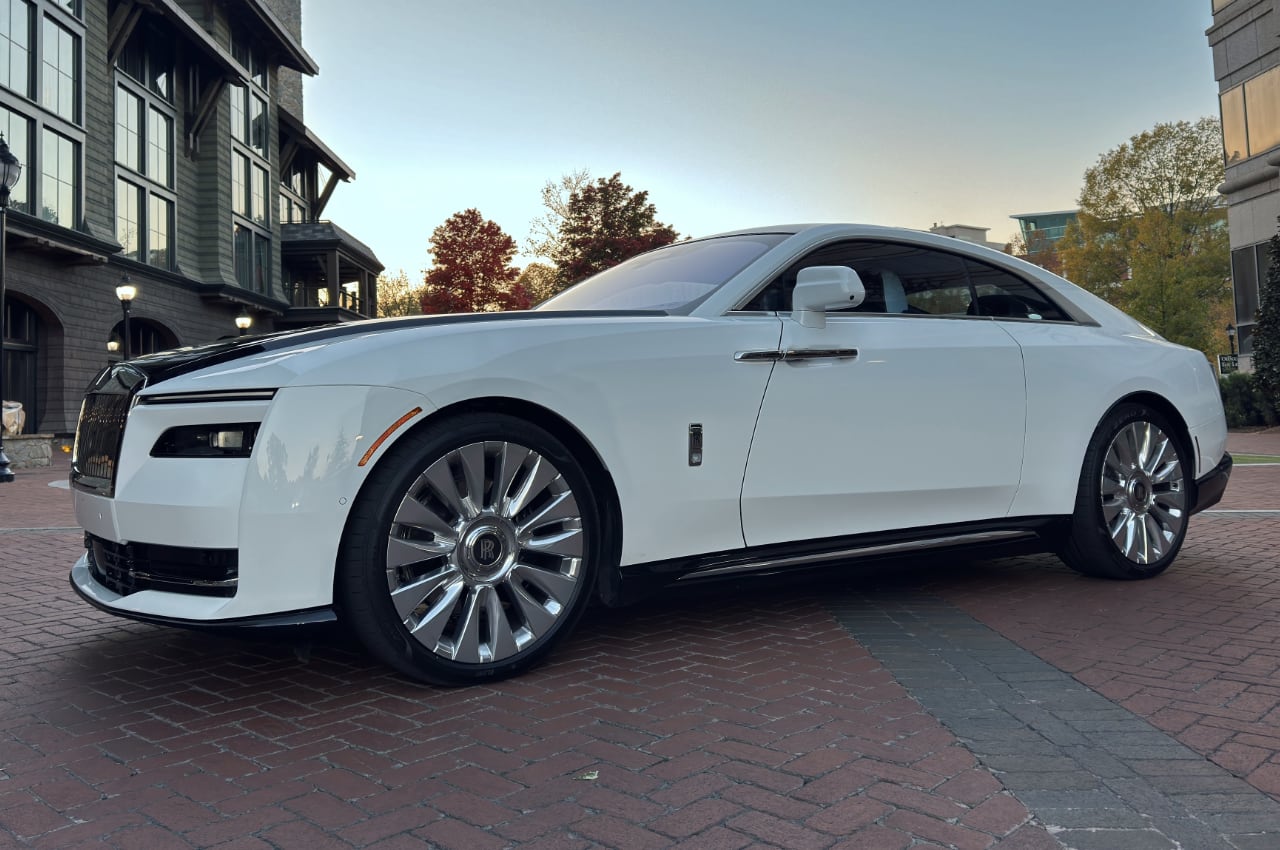
Exterior Design: Front & Side Profile – Elegant, Aerodynamic and Nautical Elegance
The car’s exterior design achieves a unique elegance and strength with a playful mix of upright and flowing lines. ItThear gives you a friendly wink, saying, “I’m strong, but I also know how to have fun!” The design creates a dynamic vibe, with waft lines that remind you of a sailing adventure, adding a sense of motion and speed, even when the car is parked. The two-tone color scheme is like a cherry on top. The Aero Two-Tone finish, a fantastic design element, highlights the car’s sporty spirit. It’s like the car is wearing a stylish cap, with the upper color extending across the bonnet and along the sweeping fastback roofline, leaving out the side pillars for an eye-catching contrast. This coloring choice, a classic feature of Rolls-Royce designs, creates an unforgettable visual impact, significantly adding to the car’s overall look.
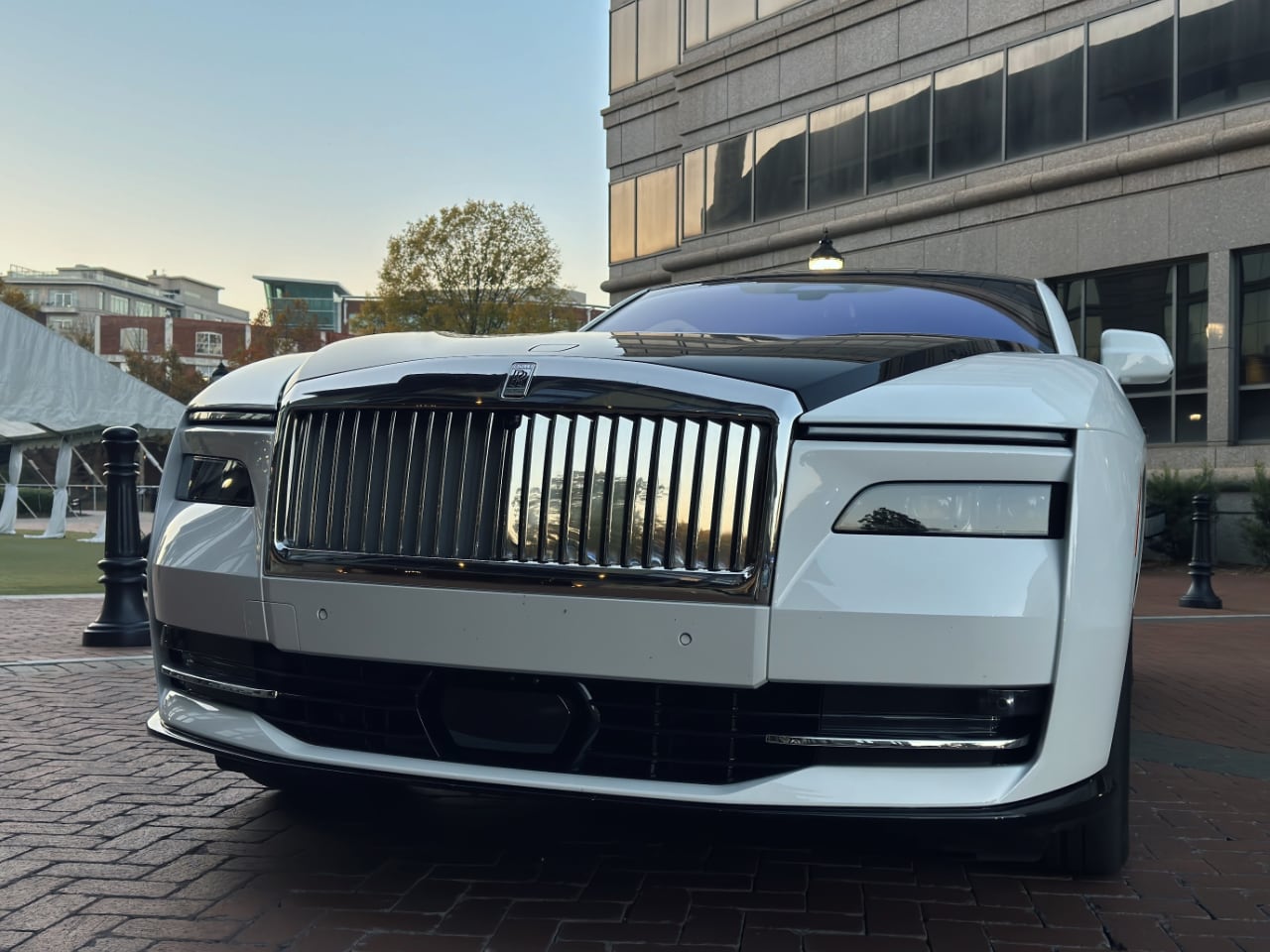
The Rolls-Royce Spectre redefines luxury automotive design in many ways, beginning with its iconic Spirit of Ecstasy. This revered emblematic figure is now reimagined for aerodynamic finesse, embodying ce and forward thrust. It’s a poetic blend of heritage and modernity.
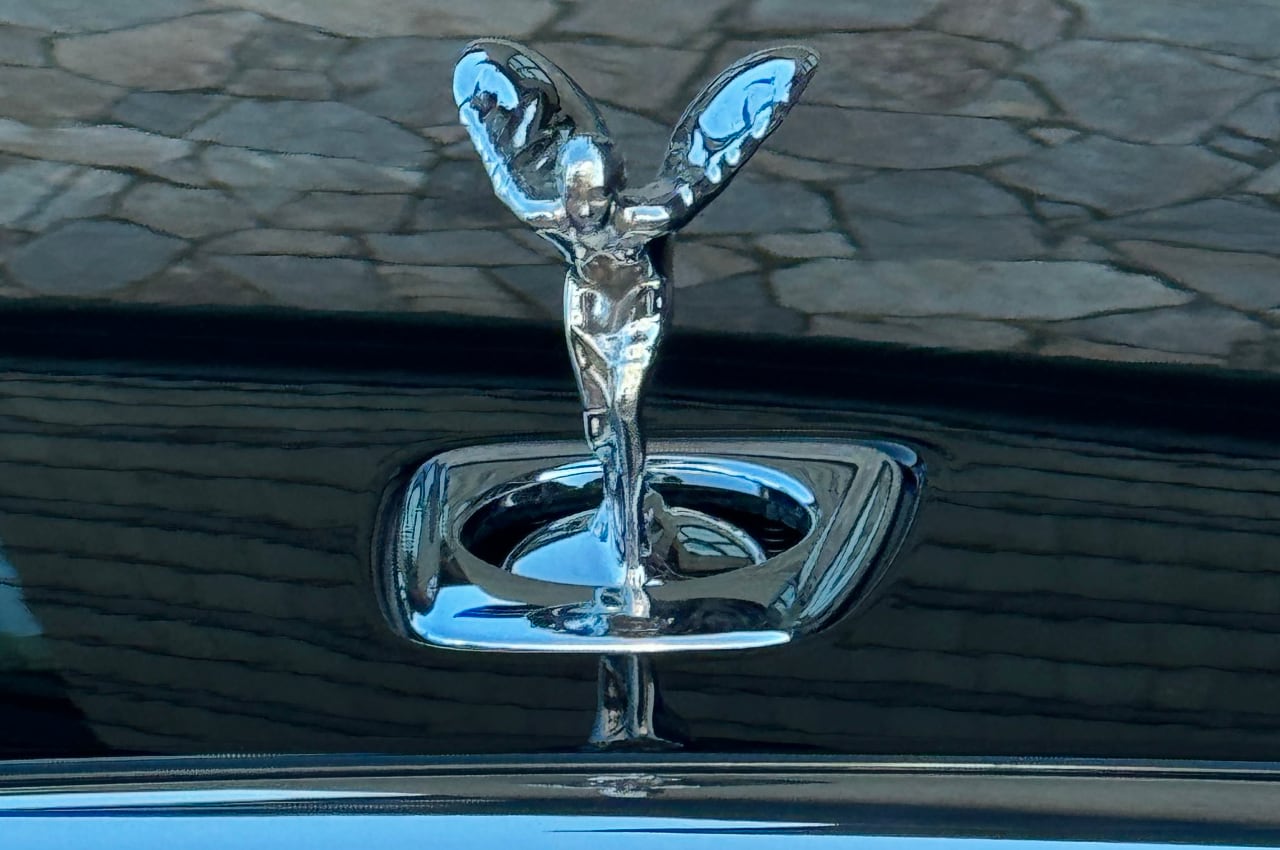
With its unique split headlights, this modern design is not about looks; it’s a mix of old and new design, similar to the famous Phantom Coupé’s lights but with a modern touch.
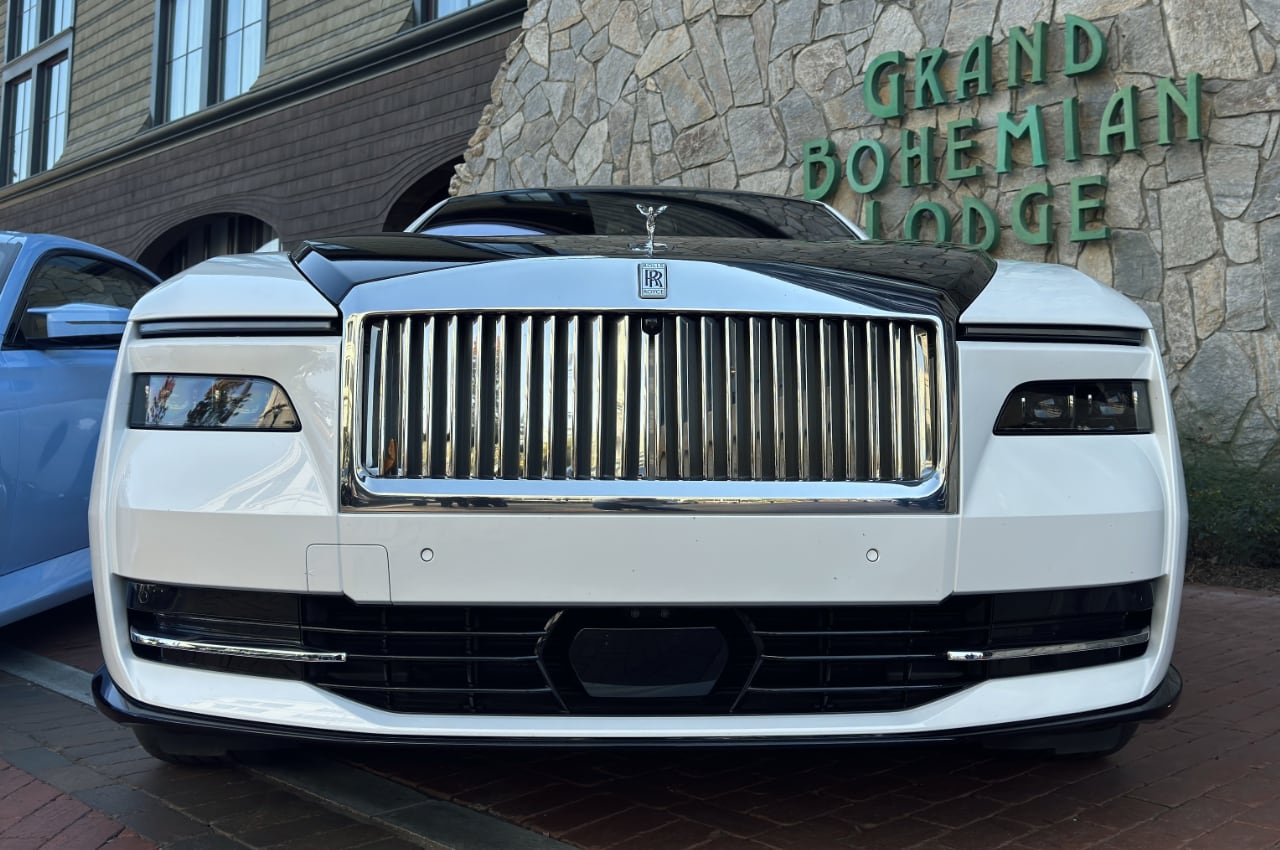
The Pantheon grille, a key feature of Rolls-Royce, has been stylishly updated for the brand’s first EV. It’s a great example of old design meeting new needs. The grille is broader, showing how the brand can change with the times but still keep its grand style. This grille isn’t just for looks; it also helps air flow smoothly around the car.
This is where the blend of design and aerodynamics has culminated in the Spectre’s drag coefficient. While it may not match other high-end luxury EVs, the figure is remarkable, considering the car’s adherence to Rolls-Royce’s design principles.
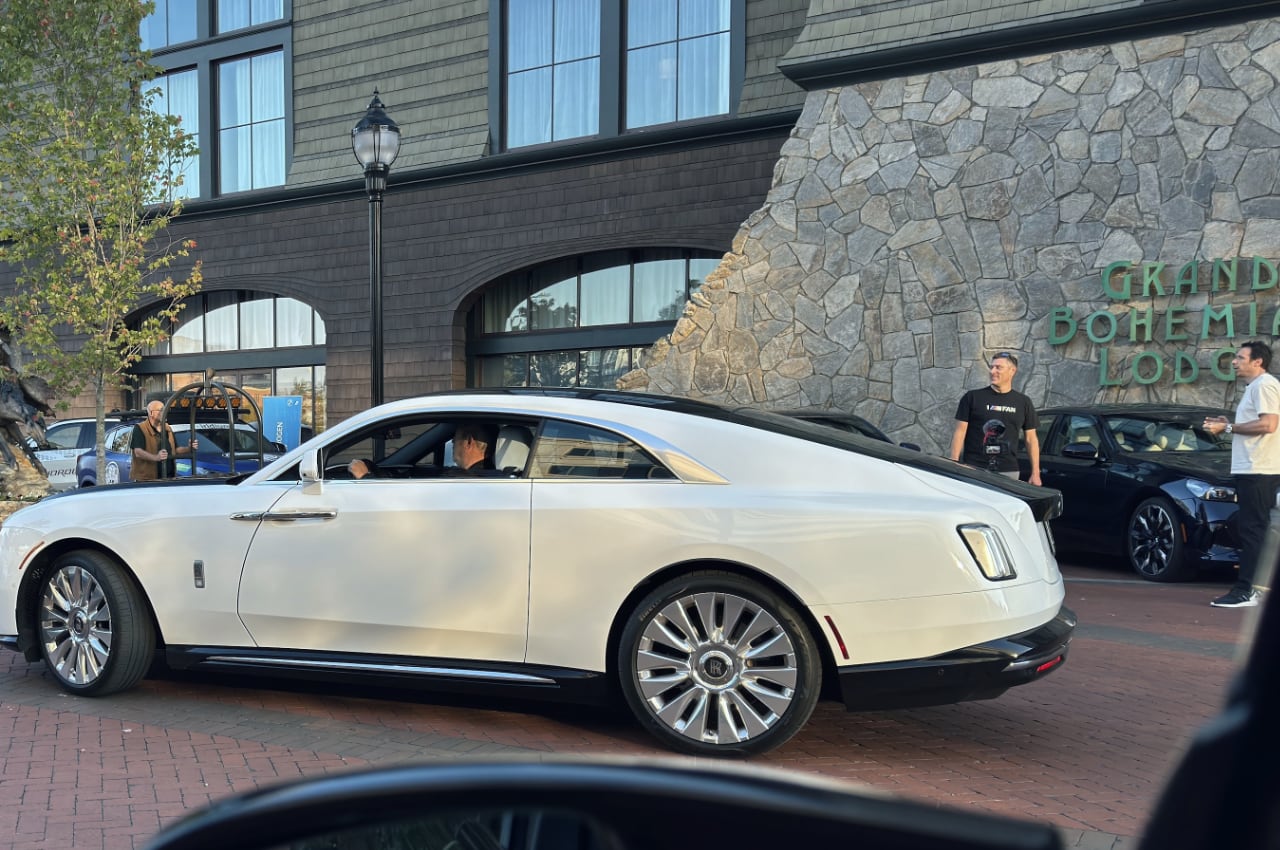
The side profile of the Spectre is a canvas where Rolls-Royce’s rich history of bespoke design merges with nautical elegance. This is apparent in the sweeping fastback glasshouse, which resembles a yacht ready for a voyage. It’s a visual narrative that combines motion and grace, intertwining car design with the elegance of maritime aesthetics.
The Spectre opts for a cleaner, more sculptural approach, avoiding excessive lines. Two defining lines – the ‘bow line’ and the ‘waft line’ – serve as key design elements and narrative features. The bow line guides the observer’s eye from the front wheel arch to the rear tail light, shaping the car’s form and emphasizing its powerful stance. The waft line, a fluid representation of movement, is reminiscent of a yacht slicing through the waves.
Together with the two-tone paint and the fastback roof, these lines create a tapering that mirrors a yacht’s stern, blending luxury maritime design and elite automotive architecture.
Rear Design – An Artistic Culmination
At the back, the Spectre’s design story reaches its peak. The converging bow and waft lines culminate at the tail of the Spectre, where the car’s yacht inspiration is arguably most evident.
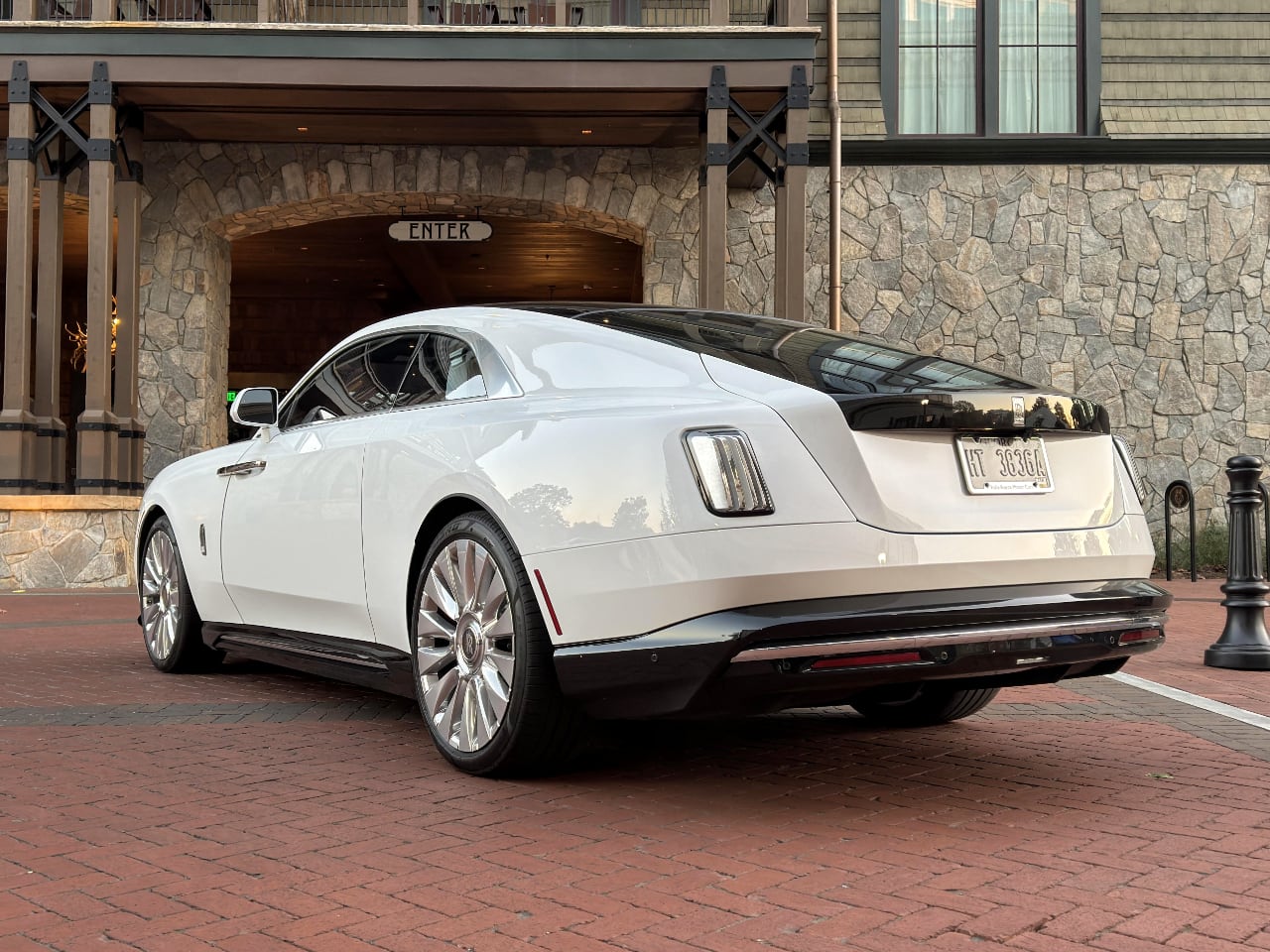
Similar to the subtle taper the stern of a yacht might have, the Spectre’s rear haunches have a gentle inwards curve that draws the eye to the U-shaped tailgate, with the rear bumper featuring an otherwise clean, uncluttered design.
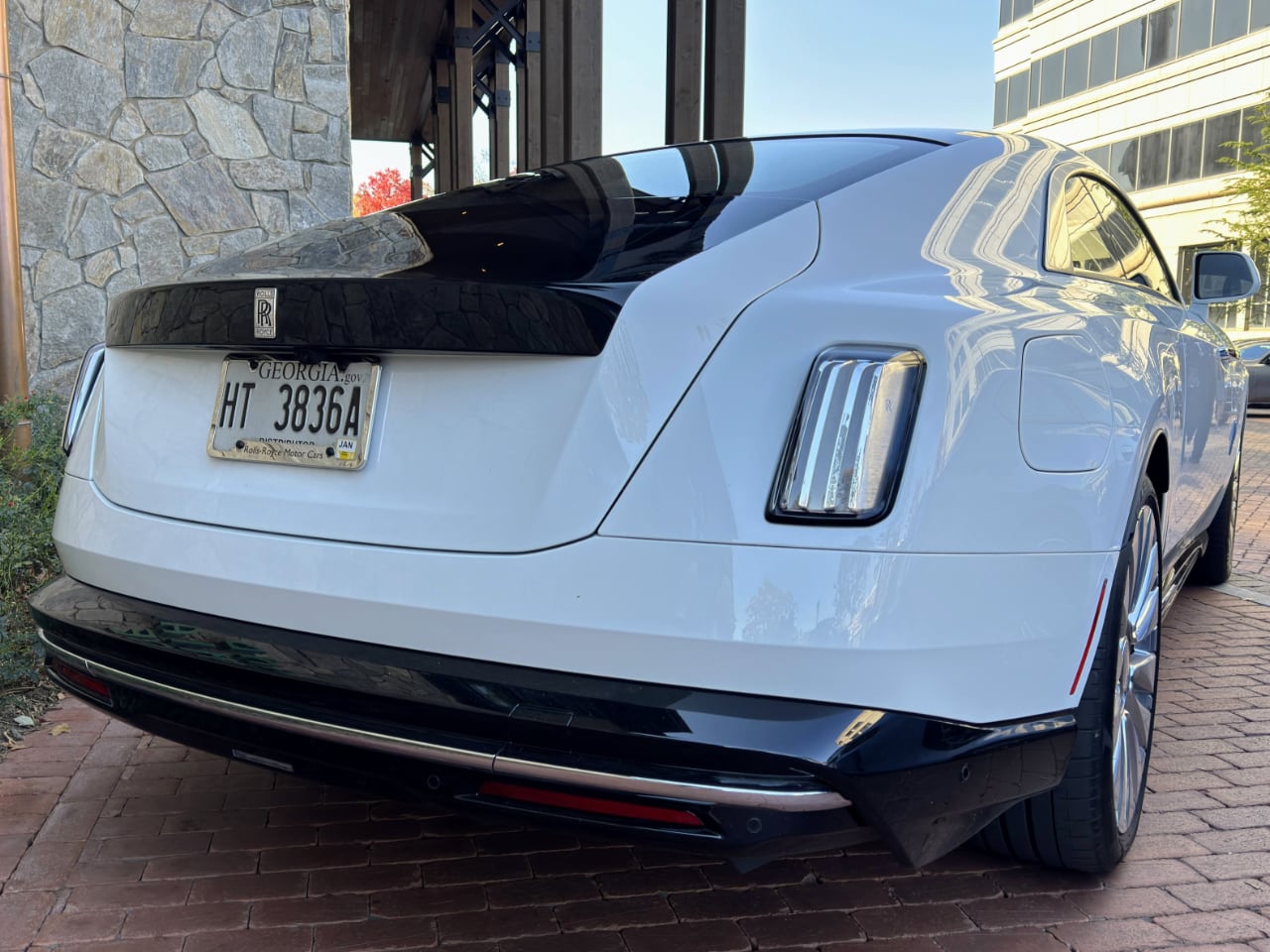
Another exciting feature is the transparent, art-deco style tail lamps equipped with a metal inset, with the company claiming the neutral finish, which allows the tail lamp design to work well with any exterior color.
Inside the Spectre: Rolls-Royce Craftsmanship and Innovation
Inside, the design focuses on superior craftsmanship and unparalleled luxury. This is apparent in the meticulous attention to detail and the use of high-end materials throughout the interior. One of the standout features is the Starlight Headliner, a distinctive Rolls-Royce feature that adds a mesmerizing, starry sky effect to the interior ambiance. This creates an ethereal and magical atmosphere within the car, making every journey a celestial experience.
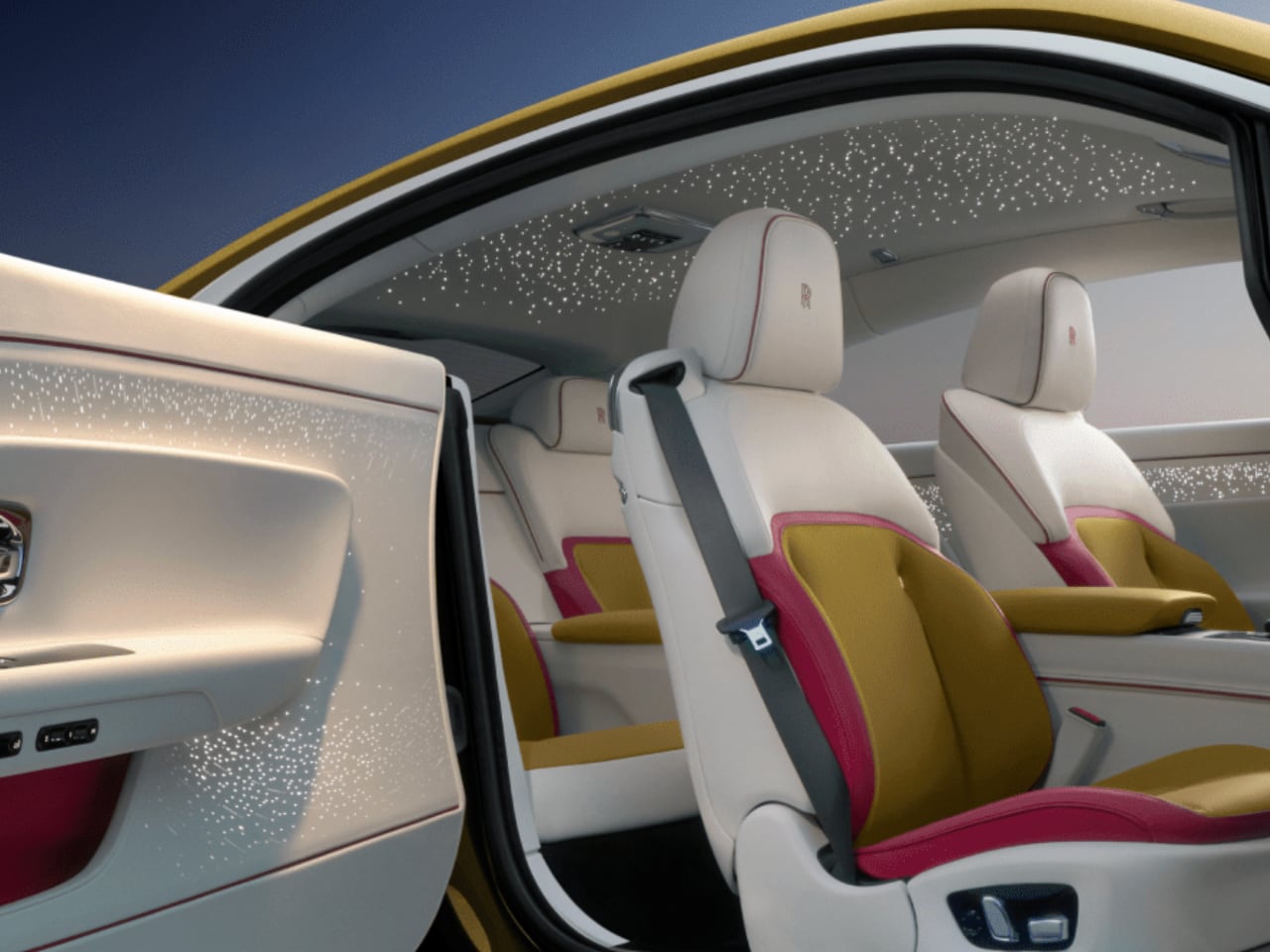
Another unique element is The Gallery, a feature that beautifully marries art and automotive design. It provides a space for personalized art displays, allowing the owner to imbue their vehicle with a personal touch and aesthetic. Beyond visual appeal, emphasis is also placed on the tactile experience. High-quality materials and finishes are used throughout the interior, ensuring every touchpoint communicates the car’s luxury and craftsmanship. This enhances the visual appeal and contributes to a more immersive, sensory driving experience.
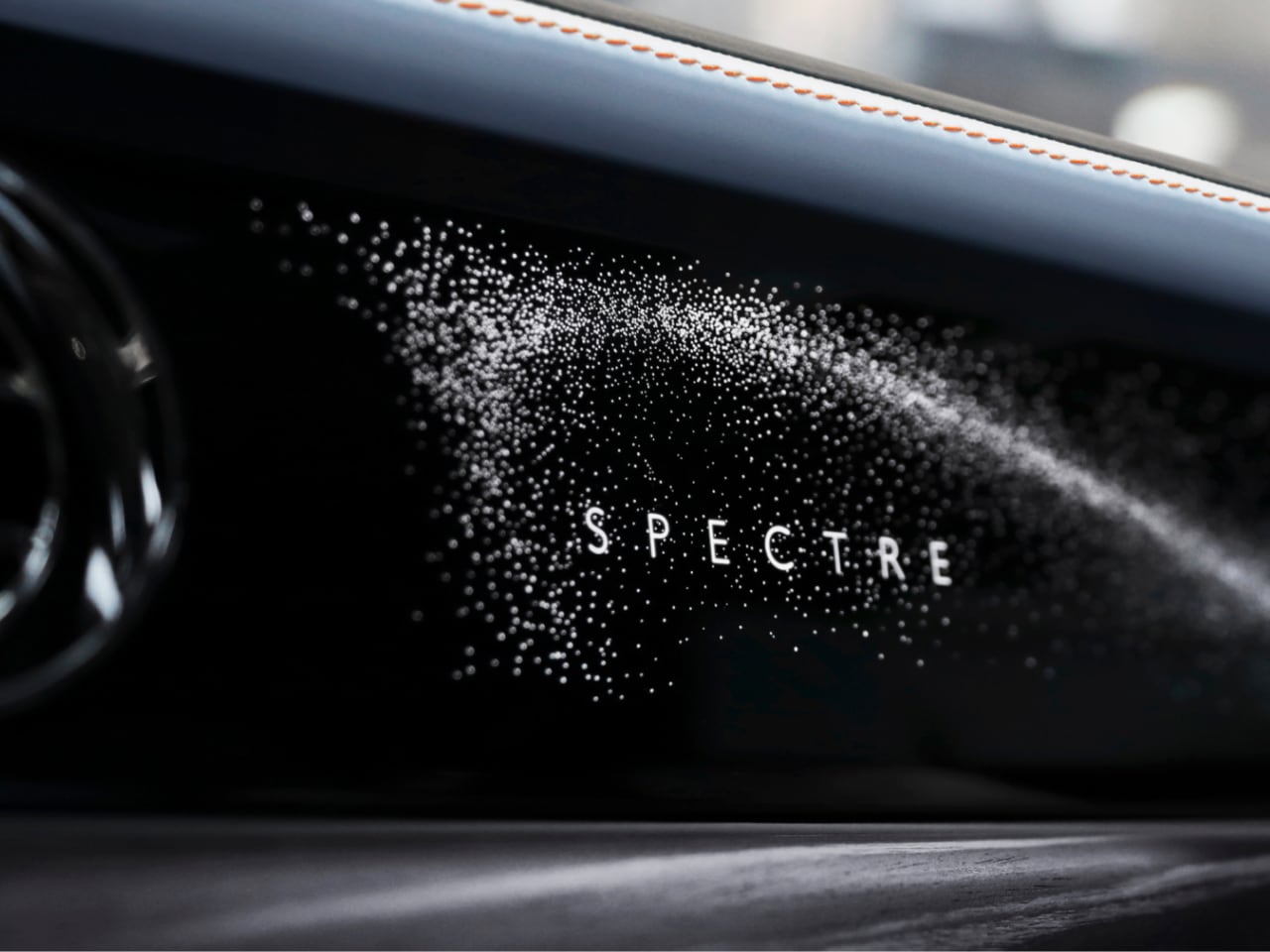
Supporting its grandness are formidable 23″ wheels, a first for Rolls-Royce, enhancing both aesthetics and performance. These wheels, adaptable for winter conditions with specialized tires, add to the Spectre’s versatility.
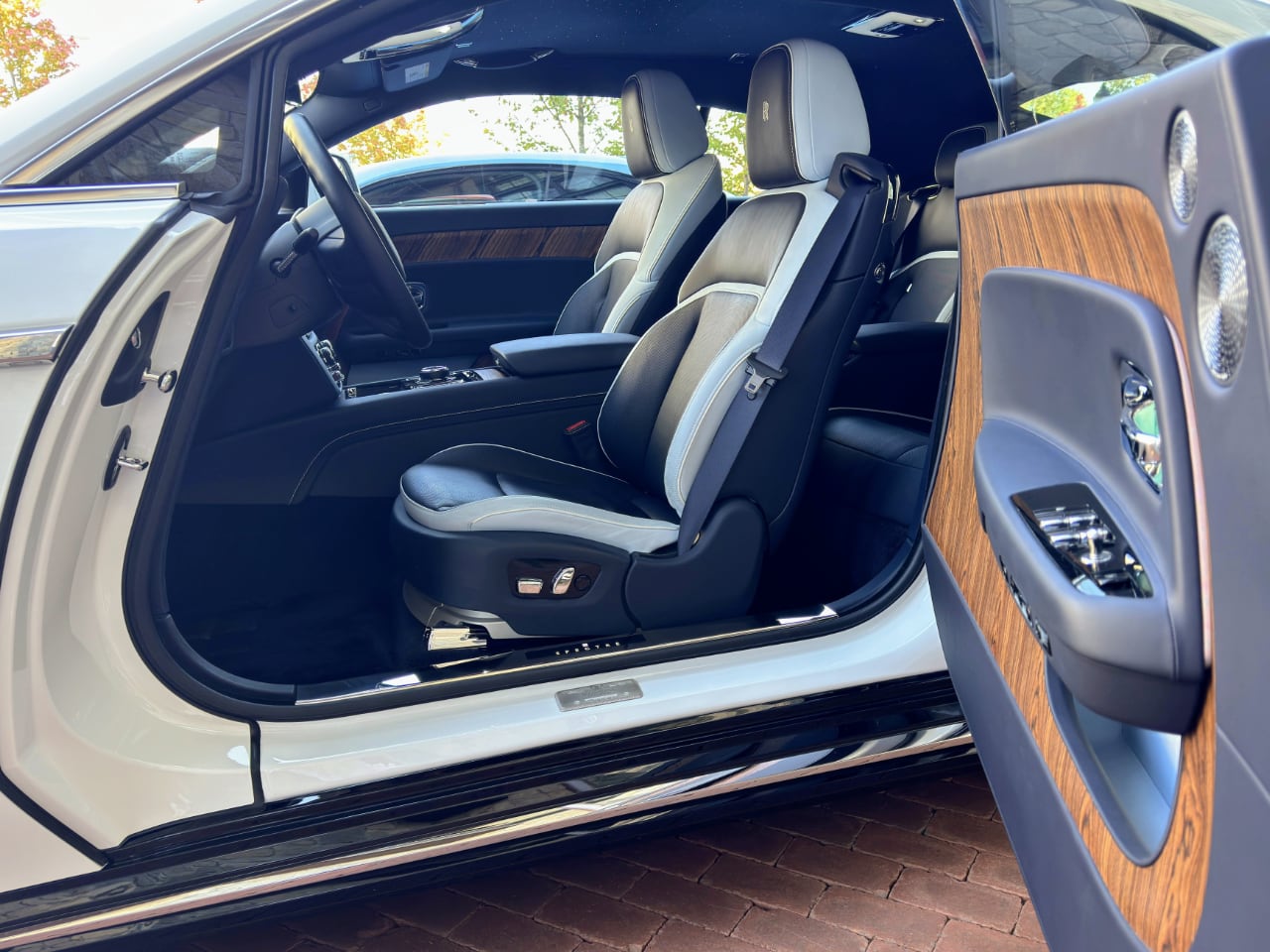
Entering and exiting the Spectre is truly elegant, thanks to the largest doors in Rolls-Royce history, measuring 1.5 meters. They allow for a graceful entry and exit. The effortless opening and closing technology mirrors the luxury of having a personal chauffeur, an expectation for any Rolls-Royce owner.
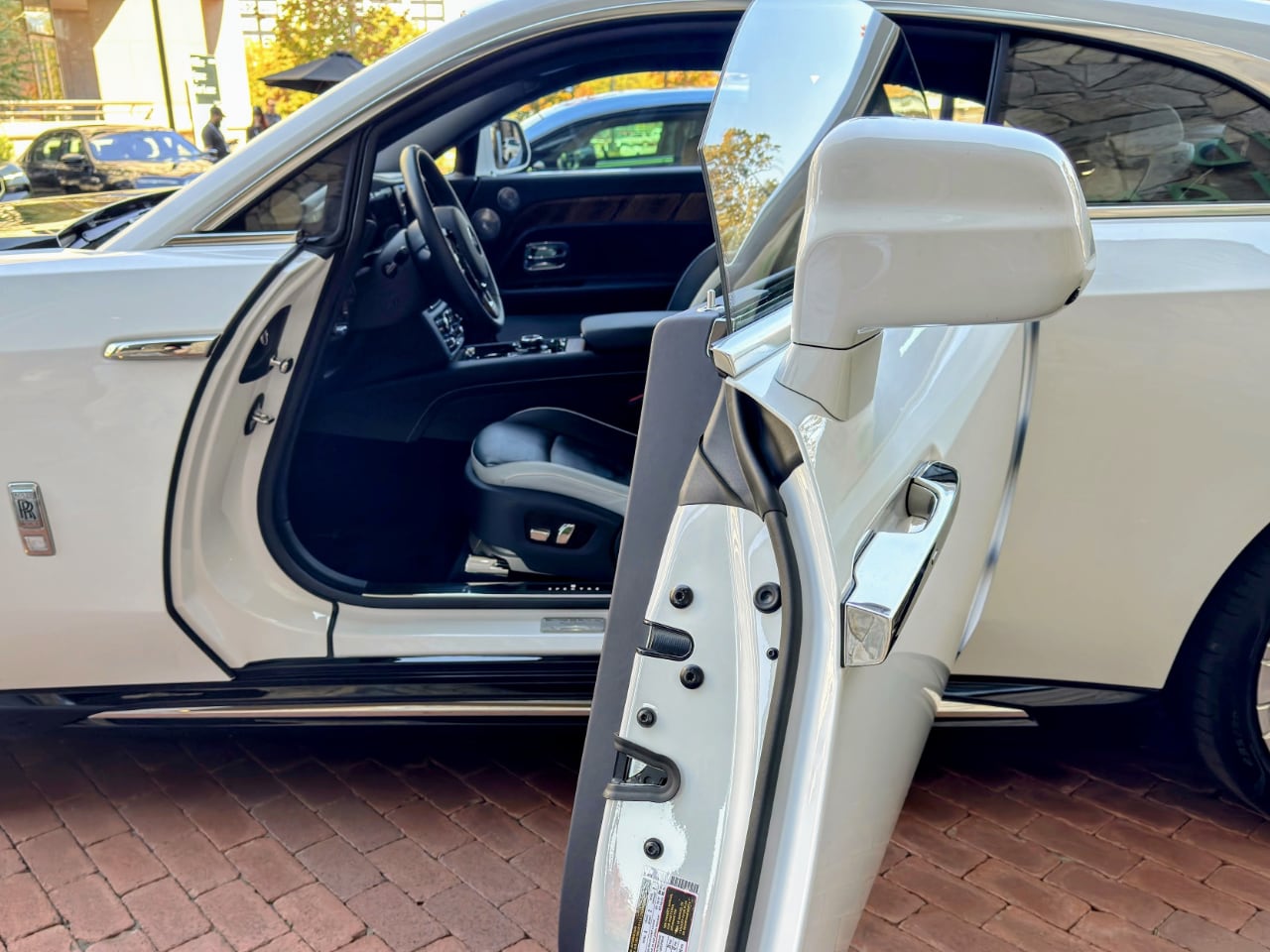
Color plays a vital role in the Spectre’s allure, with the introduction of Chartreuse, a vivid, eye-catching hue inspired by French liqueur, adding a mesmerizing richness to its appearance.
Each of these elements converges to create a vehicle that is not just a mode of transport but a statement of luxury and innovation, pushing the boundaries of electric vehicle design.
Spectre’s Performance and Range
Yes, the Spectre is entirely electric. It uses the same platform as the Cullinan SUV but with two electric motors that generate 577 hp and 664 lb-ft of torque. Despite the Spectre’s weight, the abundance of torque makes it hardly noticeable during a test drive at BMW’s Test Fest. It’s estimated to accelerate from 0-60 mph in a little over 4 seconds, a remarkable feat considering its 6,500-pound weight.
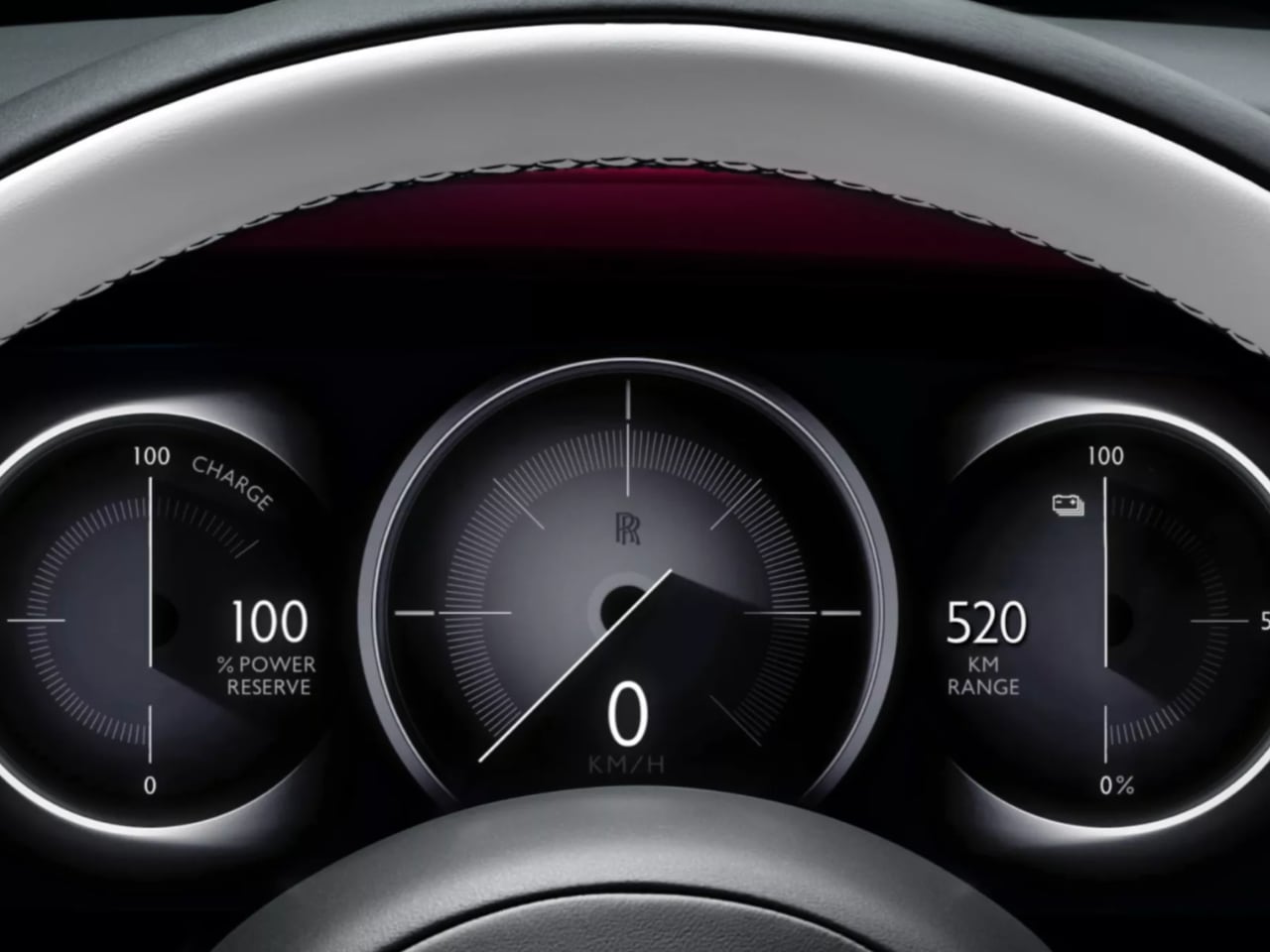
In its stride towards electric luxury, the Rolls-Royce Specter boasts a 102.0-kWh battery, mirroring the advanced technology in the BMW i7. This marks a notable step in the evolution of electric vehicles in the luxury segment. In fact, the driving range exceeds earlier expectations, offering an impressive journey of up to 291 miles on a single charge with its 22-inch wheel variant. This figure surpasses the initial projection of over 260 miles. The version sporting 23-inch wheels drops the range to 266 miles, showcasing the minor trade-offs between style and efficiency.

Meanwhile, the Black Badge edition of the Spectre, known for its heightened performance and bespoke features, offers a range of 280 miles with 22-inch wheels and 264 miles with the more prominent 23-inch option. These variations underscore Rolls-Royce’s commitment to providing choices that cater to the diverse preferences of its discerning clientele, balancing elegance, performance, and environmental consciousness.
The Spectre doesn’t just signify luxury but also represents changes in high-end car design. It combines electric power with the luxury and custom design that Rolls-Royce is known for. This shows that the brand can excel in the era of electric cars while maintaining its luxury and uniqueness.
The Spectre also features DC fast-charging capabilities, a standard that speaks to the modern luxury car buyer’s need for speed and convenience. However, in true Rolls-Royce fashion, where every detail is about personal luxury, it’s envisaged that many Spectre owners will opt for a more bespoke charging solution. The idea of a custom-installed charging system at one’s private estate aligns perfectly with the brand’s ethos – it’s not just about the practicality of charging but also about integrating this new electric age into the refined lifestyles of its clientele. This approach ensures that the experience of owning and charging the Spectre remains exclusive and seamless as the vehicle itself.
Final Thoughts
From my perspective, the Rolls-Royce Spectre EV, which starts at $422,750 and can exceed $500,000 with customization, is the pinnacle of opulent electric vehicles. It’s a remarkable blend of luxury, innovation, and environmental consciousness. The elegant design, blending the brand’s rich heritage with modern elements, is breathtaking. The Spectre shows that electric vehicles can be both luxurious and distinctive. The performance, particularly the impressive torque and range, challenges the usual limitations of electric cars, making it a joy to drive. The ride’s quietness, the quality of the interior materials, and the meticulous attention to detail all encapsulate the essence of Rolls-Royce. In conclusion, the Spectre EV successfully maintains Rolls-Royce’s commitment to its legacy while embracing the future. It was a thrill to experience.
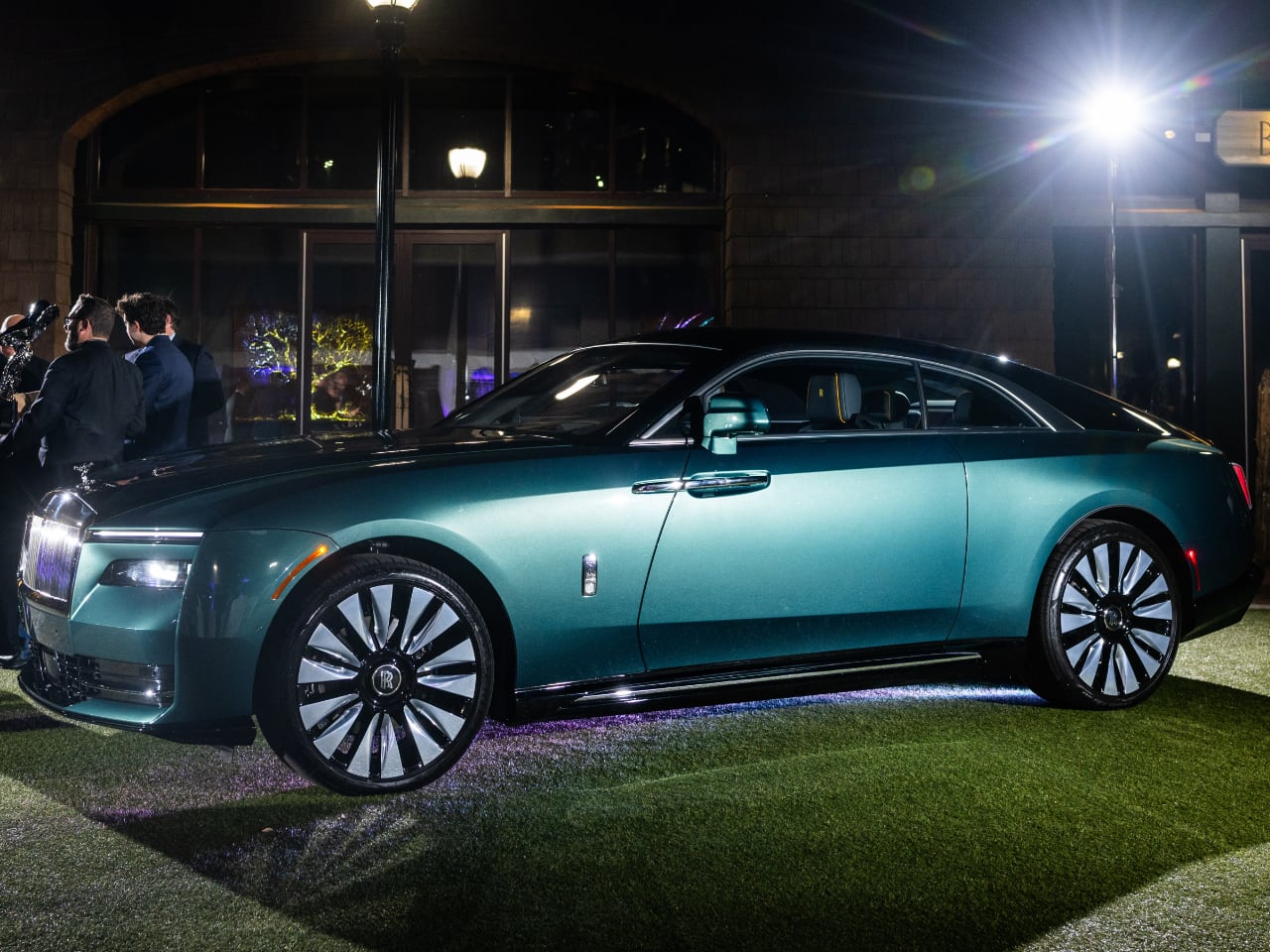
The post First Drive: Rolls-Royce Spectre EV – An Electrifying Blend of Luxury and Performance first appeared on Yanko Design.







